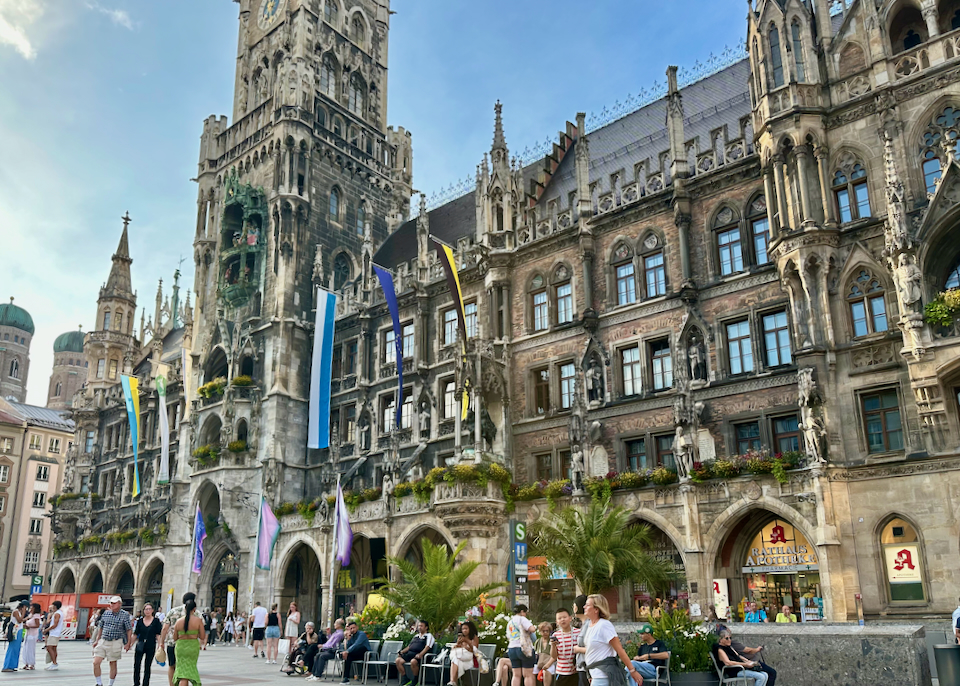
The 19th century Neues Rathaus (New Town Hall) in the Altstadt district. The best hotel near here (and our favorite luxury hotel in Munich) is the Mandarin Oriental.
The Best Area to Stay in Munich
Munich (München), the capital of the German state of Bavaria, may be best-known for its annual beer extravaganza Oktoberfest, but the city is a great place to visit any time of year: whether you’re into beer, BMW, or modern art, Munich has it all. Set on the banks of the Isar River, the city was once the seat of the House of Wittelsbach, one of Germany’s most powerful families; it supplied the dukes and then kings of Bavaria right up until 1918. (Bavaria was largely independent before joining a united Germany in 1871.) Today Munich is Germany’s third largest city and one of the richest in Europe; the land of “laptops and lederhosen” is home to BMW, Siemens, and Allianz; as well as shaded “biergartens” and traditional symbols of Bavarian kitsch.
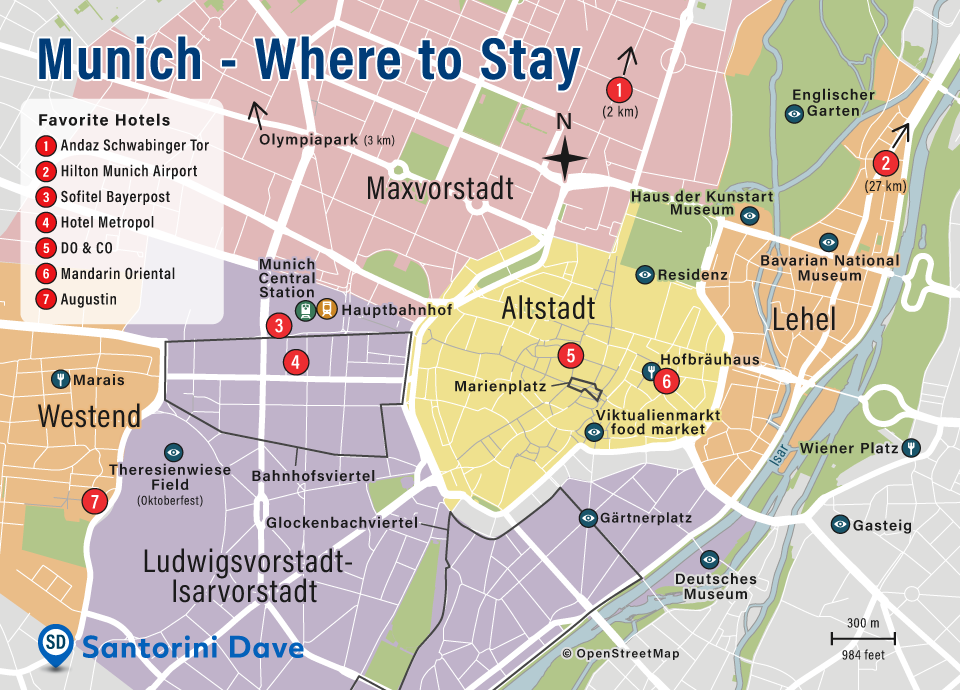
1. Andaz Schwabinger Tor • 2. Hilton Munich Airport • 3. Sofitel Bayerpost • 4. Hotel Metropol • 5. DO & CO • 6. Mandarin Oriental • 7. Augustin
Munich is fairly big, with lots to cover, but there is one area you absolutely should not miss: Altstadt, the historical and geographical center of the city. Originally a medieval walled city, the “Old Town” is packed with historic buildings, squares, museums, stores, and markets; you won’t need to venture out to keep yourself occupied if you’re only on a short vacation. Absolute must-sees are Marienplatz, the city’s main square with its two town halls; the Residenz (grand home of the Kings of Bavaria); and the Viktualienmarkt food market. But do not leave without having a pint and a pretzel at the Hofbräuhaus, Munich’s touristy but legendary beer hall. The main benefit of staying in Altstadt is that you can walk anywhere inside the old walled city within 20 minutes and, along with the sights, it has the best shopping and the most historic beer taverns.
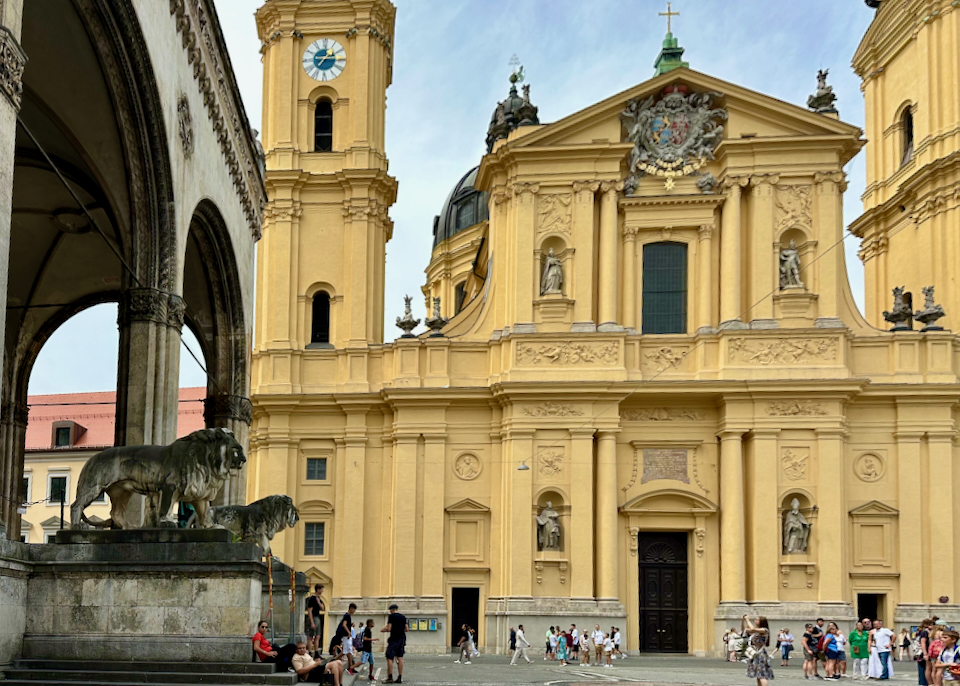
Alstadt’s grand and historic Odeonsplatz is framed by stunning architecture like the Feldherrnhalle monument and Theatine Church.
If you can’t afford the high rates here in Alstadt, check out the huge range of budget accommodation in Bahnhofsviertel, the compact district south of the main train station – you can walk (or take a tram) from here into the Old Town. Just east of the Old Town, upscale Lehel contains some appropriately high-end hotels within walking distance of the Altstadt, plus its own spread of attractions such as the Haus der Kunstart museum and Bavarian National Museum.
The second most popular area to stay is north of Altstadt in the neighborhoods of Maxvorstadt and Schwabing – some of our favorite hotels are here. Maxvorstadt is often known as the Museum Quarter for its abundance of world-class galleries and museums (it’s best known for the Blue Rider paintings in the Lenbachhaus), while Schwabing is thronged with students and is known for its beautiful Jugendstil (art nouveau) architecture. The latter also has the benefit of running north alongside the Englischer Garten: the largest inner-city park in the world.
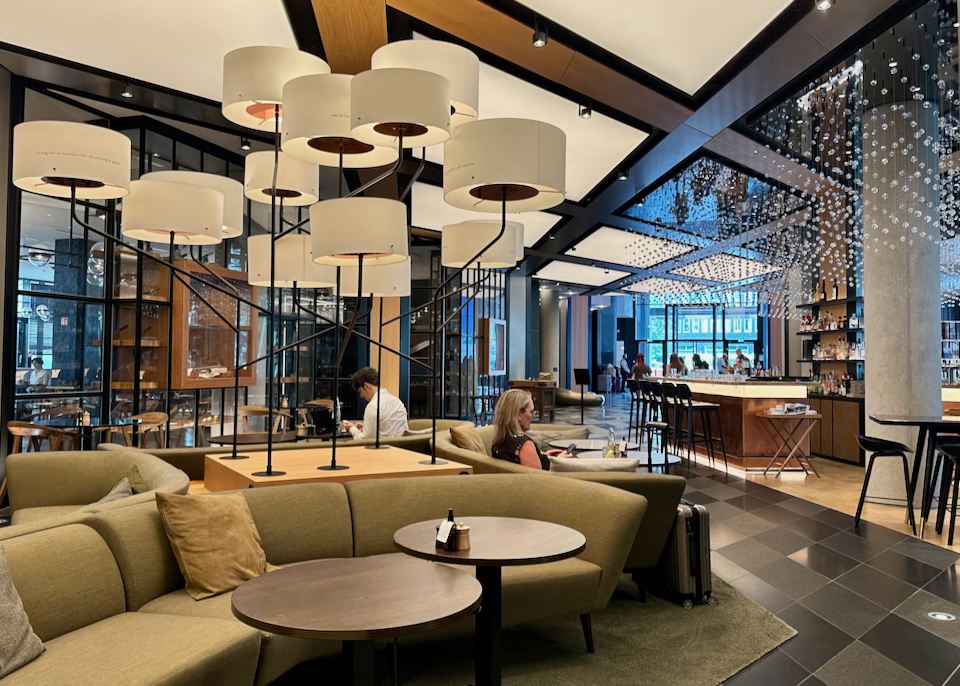
We like the Andaz Schwabinger Tor hotel in Schwabing. It has an indoor pool, on site spa and fitness center, and panoramic views from their rooftop bar.
North of Maxvorstadt is the wonderful Olympiapark, which has been well-integrated into the city since the 1972 Olympic Games were held here. There’s loads to do in Olympiapark, including Seaworld and the BMW museum, but the highlight is its needle-like tower, which has the highest viewing platform in the city (623ft/190m), with views of the Alps.
Walking through the futuristic BMW Museum in Olympiapark.
If you’re into shopping and food, make sure to factor in spending at least half a day wandering the streets south of Altstadt, in the area known as Glockenbachviertel (Glockenbach Quarter). The neighborhood centers around the lively Gärtnerplatz and forms the heart of the Ludwigsvorstadt-Isarvorstadt district. It’s the trendiest part of Munich, packed with hip bars, independent stores, and awesome restaurants. The only real tourist attraction here is the incredible Deutsches Museum, on an island in the Isar. One of Germany’s biggest and best museums, it’s a national temple to science and technology with some of the coolest interactive exhibitions of any museum anywhere, including a realistic mine, an aviation hall, and a planetarium.
Just east of Altstadt, across the Isar on the other side of the Deutsches Museum, are the neighborhoods of Au-Haidhausen. Of the two, Au is the more residential, but it’s worth exploring thanks to its charming, cobbled backstreets and characterful old houses that run alongside little streams. To Au’s north, Haidhausen has a totally different feel; as soon as you cross over the river, it feels bustling thanks to the cluster of restaurants and cafes around the Gasteig (one of Munich’s most important cultural hubs and home to the Munich Philharmonic Orchestra). Don’t miss the historic Wiener Platz, surrounded by fairytale houses, which hosts daily food stalls and has one of the city’s best beer gardens.
Charming and residential Au-Haidhausen. Our favorite hotel in this area is MOMA1890.
Many visitors become familiar with the area west of Altstadt, often referred to as Westend, as it is home to the enormous Theresienwiese open space, where Oktoberfest is held. The world’s largest folk festival, held over three weeks in the last two weeks of September and the first week of October, draws millions of visitors to the city each year, making accommodation scarce and prices soar. Outside of this time, the area is still worth a visit for the majestic statue of Bavaria, peaceful Bavariapark, and for the transport wing of the Deutsches Museum, the Verkehrszentrum.
The Best Places to Stay in Munich
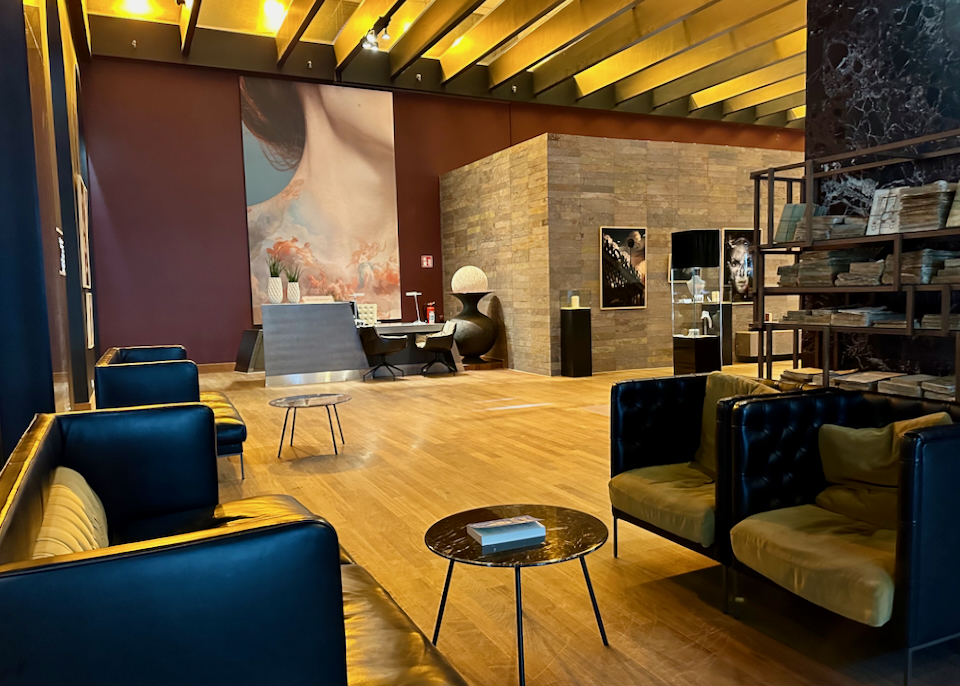
The 5-star Sofitel Bayerpost is the best hotel near Munich’s central train station – just a couple hundred feet away.
- Best Luxury Hotels in Munich
Andaz Schwabinger Tor • Bayerischer Hof • The Charles • Mandarin Oriental • Sofitel Bayerpost • Vier Jahreszeiten Kempinski- Best Boutique Hotels in Munich
Augustin • Bavaria Boutique Hotel • DO & CO • Haus im Tal • Lizz Hotel • JAMS Music Hotel • MOMA1890 • Ruby Lilly • Schwabinger Warheit • Unsöld’s Factory Hotel- Best Cheap & Midrange Hotels in Munich
Best Western Arabellapark • City Aparthotel • Hotel Lux • Hotel-Pension Am Siegestor • Hotel MIO • Marc München • Hotel Metropol • Motel One Haidhausen
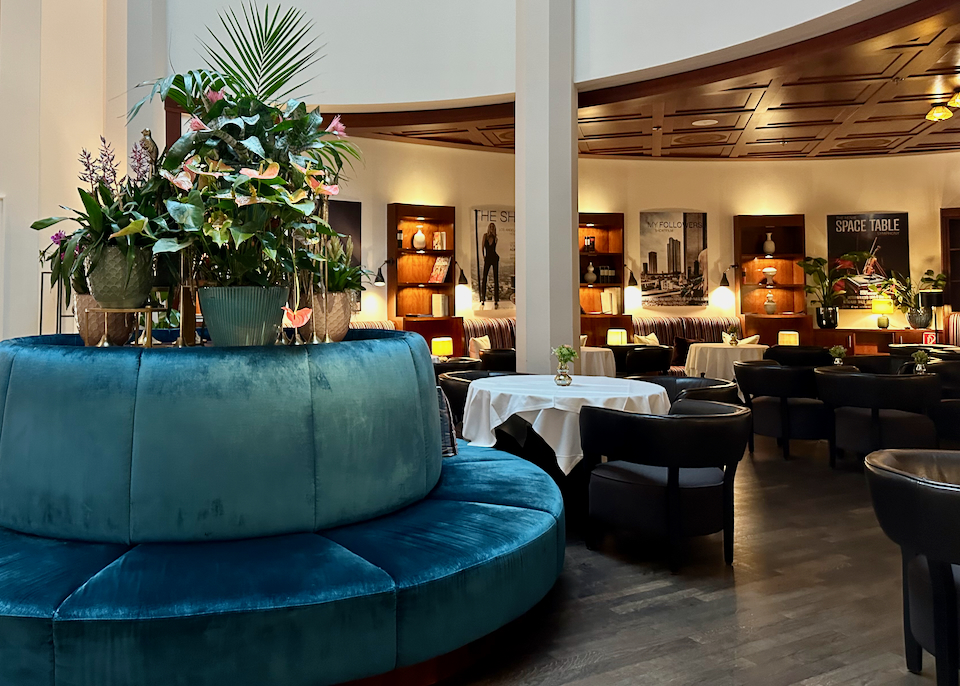
The Charles is our favorite hotel with good proximity to the world-class Kunstareal museums.
Best Neighborhoods in Munich for…
- Best Neighborhood in Munich for Sightseeing: Altstadt
It can be pricey, but staying in the Altstadt (Old Town) makes the most sense for first-time visitors to Munich. Within a 20-minute walk of each other are some of the city’s biggest sights: the gorgeous town halls on Marienplatz; the Viktualienmarkt, a sprawling produce market; the vast Residenz, opulent home to the dukes and kings of Bavaria; and the graceful Frauenkirche, with its distinctive twin spires. If you have any energy left after all that, you could stroll along the distinguished Maximilianstrasse or the Fünf Hӧfe mall, both full of luxury stores, or visit the excellent city and Jewish museums in Sankt-Jakobs-Platz. Altstadt also boasts excellent restaurants, cafes, and bars, and it’s not far from the museums in Maxvorstadt.- Best for Sightseeing on a budget: Bahnhofsviertel
It’s also worth considering this tiny multicultural neighborhood south of the main train station (Hauptbahnhof) – you’ll find a vast range of hotels here, especially at the budget level, and though it lacks the character of the Old Town, it’s a relatively short walk to the old western gate at Karlsplatz. The other plus is its proximity to the main train station and the local transportation network – it’s a great base for exploring the rest of the city and region.- Best Neighborhood in Munich for Cocktails: South of Altstadt (Gärtnerplatz)
The streets around Gärtnerplatz offer endless possibilities to find great bars, live music, and club nights, but one recent trend Munich’s in-crowd has taken to with aplomb is mixology. Among the best spots are Für Freunde Bar, which has DJs and dancing at the weekends; The High, a petit, minimalist bar specializing in highballs; Niederlassung, whose plentiful sofas are exactly what are needed after a few of their well-priced drinks; The Flushing Meadows Hotel, whose roof terrace just about gets views of the Alps; and Zephyr, whose creative concoctions will make your eyes pop. Other notable places to get a good cocktail include Die Goldene Bar at the Haus Der Kunst in Lehel; and Vega Bar and Wallace Bar in Schwabing.Munich’s LGBT scene is one of the biggest in Germany, with most bars and clubs centered around Gärtnerplatz and throughout Glockenbachviertel. The annual Christopher Street Day festivities (Pride Week) take place over 9 days in July.
Vibrant Gärtnerplatz in the Glockenbachviertel district is surrounded by great bars, restaurants, cafes, and shopping.
- Best Neighborhood in Munich for Food and Restaurants: Altstadt
Glockenbach has the trendiest restaurants, Schwabing the classiest, and Haidhausen the best foreign food, but Altstadt tops them all thanks to the draw of its taverns, the Viktualienmarkt, the world-famous gastronomic department store Dallmayr, and some outstanding Michelin-starred joints that just keep performing. On top of all the Bavarian delicacies served in traditional spots such as Wirtshaus Zum Straubinger and the Ratskeller, notable eateries include Restaurant Pfistermühle, which is set in a 16th-century mill covered in vines; and the 3-Michelin starred Atelier. On the edge of the Viktualienmarkt, do not miss the doughnut-like schmalznudel made fresh at Cafe Frischhut. And do as the locals do in the market itself: grab cheese, meats, and radishes from the stalls, sit in the central beer garden, and have a picnic with your pint. For kaffee und kuchen (coffee and cake) head to historic Café Luitpold, a former Thomas Mann hangout. For a splurge, consider local gourmet icon Tantris, located up in Schwabing since 1971.Viktualienmarkt food market
- Best Neighborhood in Munich for Traditional Taverns: Altstadt
You cannot come to Munich without experiencing a traditional tavern (wirtshaus), “bierkeller” (beer cellar), or “biergarten” (beer garden). Expect wood paneling inside, shady chestnut trees and trestle tables outside, and hearty Bavarian food and plenty of beer throughout. Many spots are centuries old and related to the city’s oldest breweriessuch as Augustiner, Paulaner, Franziskaner, and Löwenbräu (weissbier or weizenbier –wheat beer– is the tipple of choice). Look out for features such as lockers for patrons’ Steins (beer mugs) and Stammtischen (tables reserved for regulars). All serve reasonably priced draught beer and traditional Bavarian food; some are closed on Sundays. Standouts include: Hofbräuhaus – arguably the most famous tavern in the world, complete with traditionally-dressed waitstaff, oompah band, and space for 3,000 people (worth at least one beer despite the tourist crowds); Nürnberger Bratwurst Glöckl am Dom, which has welcomed luminaries as varied as Walt Disney, Ingrid Bergman, John Huston, Ted Kennedy, and Karl Lagerfeld to its dark-wood paneled dining room right by the Cathedral; medieval Zum Dürnbräu; and Augustiner Stammhaus, the Augustiner brewery’s flagship tavern on the pedestrianized Neuhauser Strasse with its multiple salons and Italianate beer garden.Outdoor dining at Hofbräuhaus in Altstadt.
There are plenty of excellent beerhalls beyond the Altstadt, as well. Favorites include Augustinerkeller (just north of the main train station); the huge beer garden at the Chinese Tower in the center of the Englischer Garten; Hofbräukeller in Au-Haidhausen; Löwenbräukeller in Maxvorstadt; and Paulaner Bräuhaus south of the Altstadt.
- Best Neighborhood in Munich for Art & Culture: North of Altstadt
In the center of the Maxvorstadt neighborhood, between the grandiose Königsplatz and Theresienstrasse, is the area known as the Kunstareal, an area with 18 museums and exhibition halls and over 40 galleries, all within walking distance. Start by determining what you want to see in the major art galleries, collectively known as Die Pinakotheken. The Alte Pinakothek represents some of the best stuff from the 14th to the 18th centuries, including works by Dürer, Raphael, Leonardo, Titian, El Greco, Rubens, and Rembrandt; it currently has the best works from the Neue Pinakothek, too (which covers Goya to Picasso), which is closed for refurbishment until 2029. The Pinakothek der Moderne focuses on art from the 1960s onwards, as well as architecture and design, while the Brandhorst focuses on contemporary art with an outstanding collection of the work of Cy Twombly. Other standout museums and galleries include the Lenbachhaus, which has the world’s best collection of works from the Blue Rider Group (Kandinsky, Klee, et al), and the Staatliche Antikensammlungen und Glyptothek, which gathers together many Greek, Etruscan, Roman, and Egyptian treasures in two museums around the Königsplatz. Also on the plaza is the NS-Dokumentationszentrum, a center to learn and understand more about Munich’s dark Nazi period.The wonderful Alte Pinakothek museum. Our favorite hotel near here is The Charles.
- Most Romantic Area in Munich: Englischer Garten
Munich’s “English Garden” in Schwabing is the largest inner-city park in the world and provides ample opportunity for romance. Running north-south along the Isar, there’s a lot to explore, including a Chinese pavilion (with beer garden), woodland areas, hiking trails, taverns and beer gardens, fields for nudism, a boating lake, and an area for surfing (it has to be seen to be believed), to name just a few attractions. The Mini-Hofbräuhaus im Englischen Garten halfway up is usually much more tranquil than the usual city beer gardens, and we also like elegant Aumeister, at the northern end. The main park starts at the northeastern corner of the Hofgarten (another romantic green space). Start or finish your date at Die Goldene Bar, a fabulous bar-restaurant dripping in gold leaf in the contemporary art gallery, the Haus der Kunst, on the southern edge of the main park. Romantic places to stay on the park’s fringes include Gästehaus Englischer Garten and Biederstein am Englischen Garten.- Best Neighborhood in Munich for a Local Vibe: East of Altstadt (Au-Haidhausen)
Everything feels less touristy as soon as you cross over the Isar to the borough of Au-Haidhausen, even though you’re only a 10-minute walk from Altstadt. Of the two neighborhoods, Au is the more residential, but it comes to life during the Auer Dult folk festival (held every four months in the Mariahilfplatz). It’s one of Au’s top draws and specializes in ceramics and pottery stalls with traditional Bavarian entertainment. To the north of Au, Haidhausen feels much more bustling thanks to the cluster of restaurants and cafes around the Gasteig (one of Munich’s most important cultural hubs and home to the Munich Philharmonic Orchestra). There are also some great squares to explore, like Max-Weber-Platz, Weissenburger Platz, and Rosenheimer Platz, but don’t miss the historic Wiener Platz, surrounded by fairytale houses, which hosts daily food stalls (the fish hut is outstanding) and has one of the city’s best beer gardens. There’s also the eastern extension to the Englischer Garten here, known as the Maximiliansanlagen, which has lots of riverside trails as well as the majestic Maximilianeum, home to the Bavarian state parliament.- Best Neighborhoods for Shopping: Glockenbachviertel and Altstadt
For traditional shopping – and luxury malls – Altstadt is definitely your best bet, with much of the Old Town a vast open-air (and pedestrian-only) shopping center frequented by locals as much as tourists. Top malls include the Fünf Höfe, the upscale Kaufingertor Passage (near the giant Galeria Kaufhof München department store), and Hofstatt. Major stores include Hirmer (for menswear), the historic Lodenfrey department store (a good place to hunt for dirndls, those traditional Bavarian dresses), the upscale Oberpollinger department store, and the posh Kustermann homeware store. For mainstream international fashion peruse Sendlinger Strasse, or hit Maximilianstrasse for designer boutiques. Munich’s big Christmas market is held on Marienplatz.For a more independent shopping scene head beyond the Altstadt. Gärtnerplatzviertel and Glockenbachviertel, south of the Old Town, is our favorite area, home to indie boutiques and sustainable German brands. Highlights include the Capricorn Store, which specializes in secondhand designer fashion; the delicate jewelry at the showroom of celebrated local designer Saskia Diez; sustainable fashion at Akjumii; and hip women’s clothing at Mykke Hofmann.
• If you’re looking to pick up traditional lederhosen and vintage dirndls but want to save money, check out Michaela Klein’s Holareidulijö in Maxvorstadt. Alternatively, you can rent traditional gear to look the part at Oktoberfest (or at any time) from Bavarian Outfitters.
- Safety in Munich
Munich is generally very safe for tourists. The biggest threats come during Oktoberfest, where alcohol abuse makes people’s judgments less than sober and the large crowds can draw pickpockets.The 10 Best Neighborhoods in Munich for Tourists
1. Altstadt
Unlike many of Europe’s showcase cities, Munich’s Altstadt (Old Town) happily remains full of everyday life, despite a heavy tourist presence – locals still come here to shop, eat, and drink. For visitors it’s the ideal place to stay, with the city’s major attractions and historic sights within a 20-minute walk of each other.
Start in Marienplatz (shown above), Munich’s showstopping main square, whose most famous sights are the two town halls. The newer of the two, the ornate 19th-century Neues Rathaus, dominates with its wonderful Glockenspiel clock that chimes at 11 am, noon, and 5 pm daily, while the beautiful 14th-century Altes Rathaus on the eastern side of the square features a stepped roof and pedestrian walkways running underneath.
Outdoor tables at the Ratskeller restaurant at Munich’s Neues Rathaus.
Overlooking Marienplatz from the south is the church known as Alter Peter (Old Peter, St. Peter, or Peterskirche), which has a great viewing platform. Further south is the Viktualienmarkt, a sprawling open-air market for produce and Bavarian specialty food like leberkäse and schmalznudel (it’s also the best place for a cheap meal, and has its own beer garden in the center).
Viktualienmarkt
Nearby on Sankt-Jakobs-Platz, the Münchner Stadtmuseum provides an excellent overview of the city’s history, while the Jewish Museum focuses on the history of Jewish Munich. Opened here as a contemporary cube design in 2006, the striking Ohel-Jakob-Synagogue replaced the old synagogue destroyed by the Nazisin 1938. Munich also has many beautiful churches; a short stroll west of the Jewish Museum stands Asamkirche Catholic church, which boasts by far the most beautiful interior.
Munich’s main pedestrian shopping area stretches west from Marienplatz along Kaufingerstrasse. To the northwest is the Dom Zu Unserer Lieben Frau (Cathedral of Our Dear Lady), nicknamed the Frauenkirche, with its distinctive onion domes that took their inspiration from Oriental architecture. West of the Frauenkirche, the stunningly beautiful 16th-century church of St Michael contains the tomb of “Mad” King Ludwig II and other Wittelsbach rulers.
Church of St Michael
To the north of Marienplatz are two great squares, Marienhof and the Platzl. On the former, don’t miss the gourmet department store Dallmayr; on the latter, the legendary Hofbräuhaus is the main draw, with roots that stretch back to 1589 – order at least one beer here. Beer aficionados should check out the Bier & Oktoberfest Museum to the southeast.
Hofbräuhaus, founded in 1589 by Duke Wilhelm V of Bavaria as a royal brewery, has evolved into one of the world’s most famous beer halls.
A little further north is the Residenz, a series of adjoining grand buildings and courtyards which together comprise the home of the rulers of Bavaria from 1508 to 1918 (what survives today is mostly the result of post-1945 reconstruction). It’s massive, with some truly magnificent decor and artwork – take the audio tour but skip rooms that don’t look interesting, otherwise you’ll be there for hours (it costs extra to visit the Treasury and Cuvilliés Theatre, but these are not worth it unless you are really, really interested).
The Residenz
Nextdoor to the Residenz is the Odeonsplatz – a square whose architecture is uncannily Italian – and the Hofgarten: a gorgeous green space; grab a cocktail at Schumann’s to recharge or wind down. Walk up and down Maximilianstrasse east of the Residenz if you want a taste of the high life; it is home to Munich’s most luxurious shops and eateries, as well as the Bavarian State Opera.
Odeonsplatz
There are some great hotels in Alstadt, but you’ll find a wider choice of hotels in neighboring Bahnhofsviertel, especially at the budget level, though that area has a lot less character.
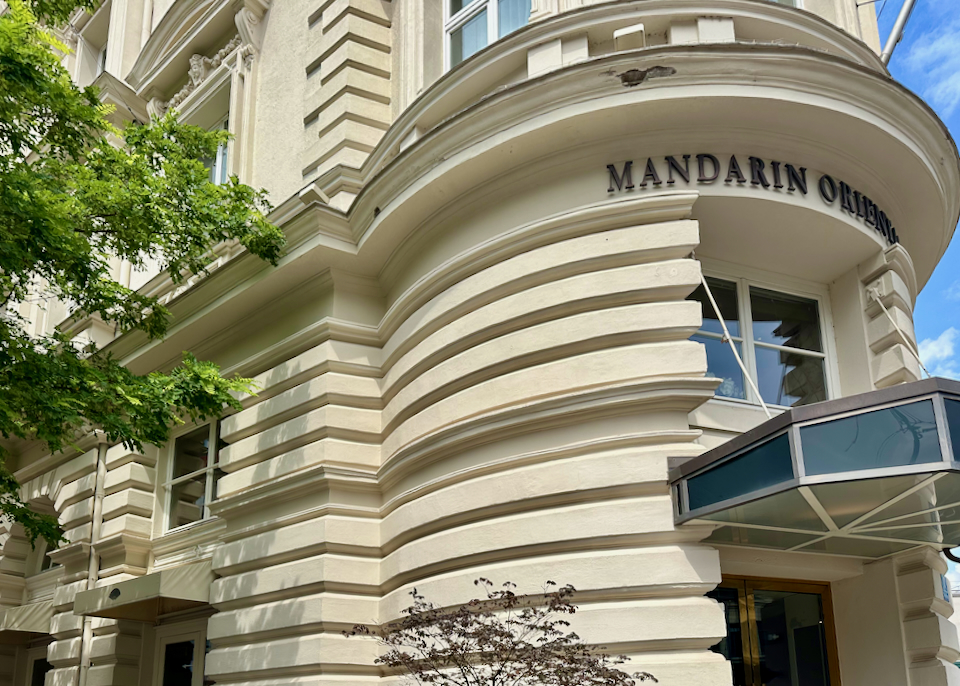
The Mandarin Oriental, our favorite 5-star hotel in Munich, has a great location in the heart of Altstadt, near landmarks such as the Hofbräuhaus and Maximilianstrasse. The structure it’s housed in originally served as the Central-Säle, a venue for debutante balls and concerts; now it features gourmet dining by renowned chef Nobu Matsuhisa, a wellness spa, and a rooftop terrace with panoramic city views.
- Best Hotels in Altstadt
Bayerischer Hof • BEYOND • CORTIINA Hotel • DO & CO • Haus im Tal • Hotel Torbräu • Louis Hotel • Mandarin Oriental • Platzl Hotel • Vier Jahreszeiten Kempinski- Best Cheap/Moderate Hotels
Buddy Hotel • City Aparthotel • Hotel Lux • Hotel MIO • Motel One Sendlinger Tor2. North of Altstadt: Maxvorstadt & Kunstareal
There are so many museums in Maxvorstadt that for culture-hawks, it’s worth staying nearby so you can walk to them all. The streets around Theresienstrasse and Josefsplatz provide you with the best sense of this student-filled neighborhood – Augustenstrasse is especially buzzing – but anywhere north of the Hauptbahnhof or north of Altstadt is within easy walking distance.
Pinakothek der Moderne
In terms of museums, the top picks are known collectively as Die Pinakotheken: Alte Pinakothek (above) contains a fabulous collection of Old Masters, the Neue Pinakothek is especially good for 19th-century German art and Impressionism, and the Pinakothek der Moderne focses on modern and contemporary art. Nearby, Die Neue Sammlung is an intriguing museum of industrial design, while the distinctive Brandhorst Museum opened in 2009 to house acollection of German and primarily American modern art, notably Cy Twombly’s Lepanto paintings. The Staatliches Museum Ägyptischer Kunst (State Museum of Egyptian Art) opened in 2013 to house a vast collection of Ancient Egyptian artifacts.
Die Neue Sammlung
Brandhorst Museum
Staatliches Museum Ägyptischer Kunst
The parade of museums continues to the southwest in Königsplatz, though this now tranquil green square has a darker history: this was the site of many Nazi rallies and was the location of Hitler’s Munich headquarters. On the east sideis the so-called Führerbau, where Hitler had his office and where the infamous Munich Agreement to abandon Czechoslovakia was signed in 1938; a small plaque recalls the event, but the building now serves asthe Munich University of Music and Theatre. On the site of the former Nazi party headquarters (aka “Brown House”), the enlightening but harrowing NS-Dokumentationszentrum chronicles the rise of Nazism in Germany with special attention to Munich.
Today the main Neoclassical buildings on the Königsplatz act as museums of ancient Greek and Roman antiquities: the Glyptothek (art gallery), and the Staatliche Antikensammlungen (State Collections of Antiques), separated by a Greek-style city gate, the Propylaea. Nearby stands the Lenbachhaus, a must-see for art lovers thanks to its rare collection of works by the Blaue Reiter (Blue Rider) artist group. The eastern edge of Maxvorstadt is marked by grand Ludwigstrasse and one its major universities, Ludwig-Maximilians-Universität München. Not far from the Siegestor (city gate), there’s a memorial in front of the university to commemorate the anti-Nazi student group, Weisse Rose (plaques symbolizing the students’ antifascist leaflets are set into the cobbles). You can also visit the Denkstätte Weisse Rose (White Rose Memorial) and museum in the atrium.
On the western side of the district, beer fans can make the pilgrimage to the Löwenbräukeller, original 19th-century home of the Löwenbräu brewery, and the famous Augustiner-Keller, north of the main train station. Be sure to stop in at the Schelling-Salon at Schellingstrasse 54 for a drink and a game of billiards/pool – it’s been around since 1872. Another restaurant with lots of history is AlterSimpl, a cozy wood-panneled home to artists and writers since 1903.
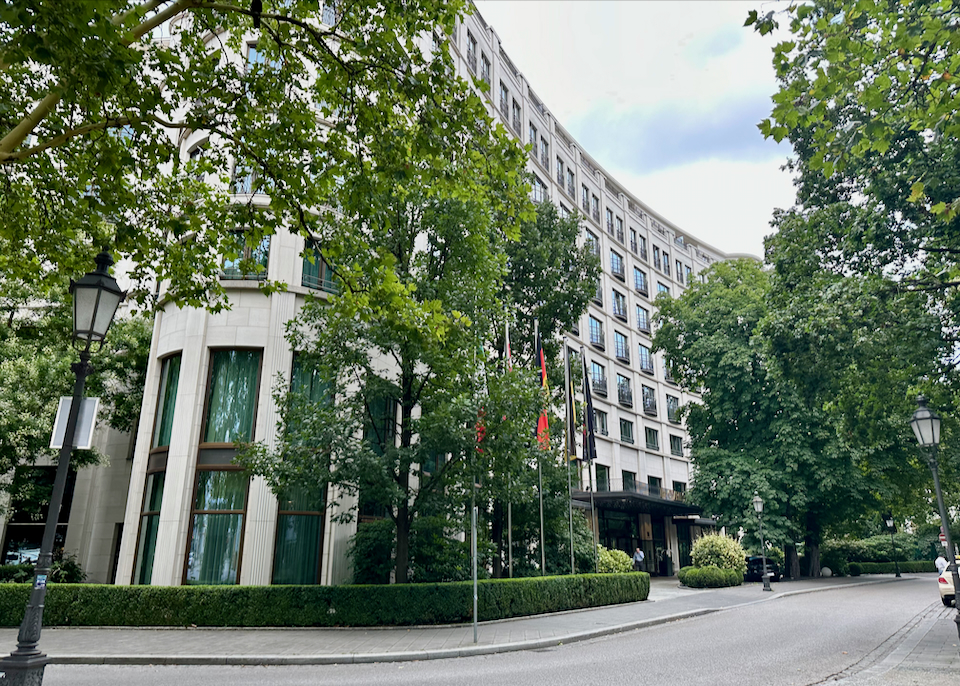
We love the 5-star Charles hotel, located in Maxvorstadt near some of Munich’s best museums.
- Best Hotels in Maxvorstadt & Kunstareal
The Charles • Eden Hotel Wolff- Best Cheap/Moderate Hotels
elaya hotel • Hotel Europa • Hotel-Pension Am Siegestor • King’s Hotel First Class • Ruby Lilly3. North of Altstadt: Schwabing & Englischer Garten
Staying in Schwabing is great not only for the studenty atmosphere (students from nearby Ludwigs-Maximilians-Universität and the Technical University of Munich live here), and the cheap as well as fun drinking and dining options that come with that, but also for seeking out pristine Jugendstil (Art Nouveau) architecture.
Jugendstil architecture in Schwabing flourished around 1900. Its ornate facades, floral motifs, and curvilinear forms reflected the district’s bohemian spirit and artistic vibrancy.
The area also has fine art prestige (the likes of Wassily Kandinsky, Paul Klee, and their colleagues lived and worked around here), though it’s no longer Munich’s Bohemian quarter. The draw for many, however, is the enormous Englischer Garten. Make sure to factor in at least half a day in the park and allow yourself to wander, but do not miss the Chinesischer Turm (Chinese Tower), which has a popular beer garden at its base and was modelled on the pagoda at Kew Gardens in London.
Englischer Garten
Some of the best and most romantic hotels in Munich are actually located here, not in the Old Town, with slightly cheaper rates to make up for longer travel times into the city center.
At the far northern end of Schwabing lies the ultra-modern Allianz Arena, home of Bayern Munich, one of Germany’s (and Europe’s) best soccer teams. Fans can visit the team museum here or attend a game. The stadium itself is a contemporary wonder, designed by Swiss architects Herzog & de Meuron. It overshadows the tiny Heilig-Kreuz-Kirche nearby, the oldest church in Munich, dating from the 11th to 12th centuries.
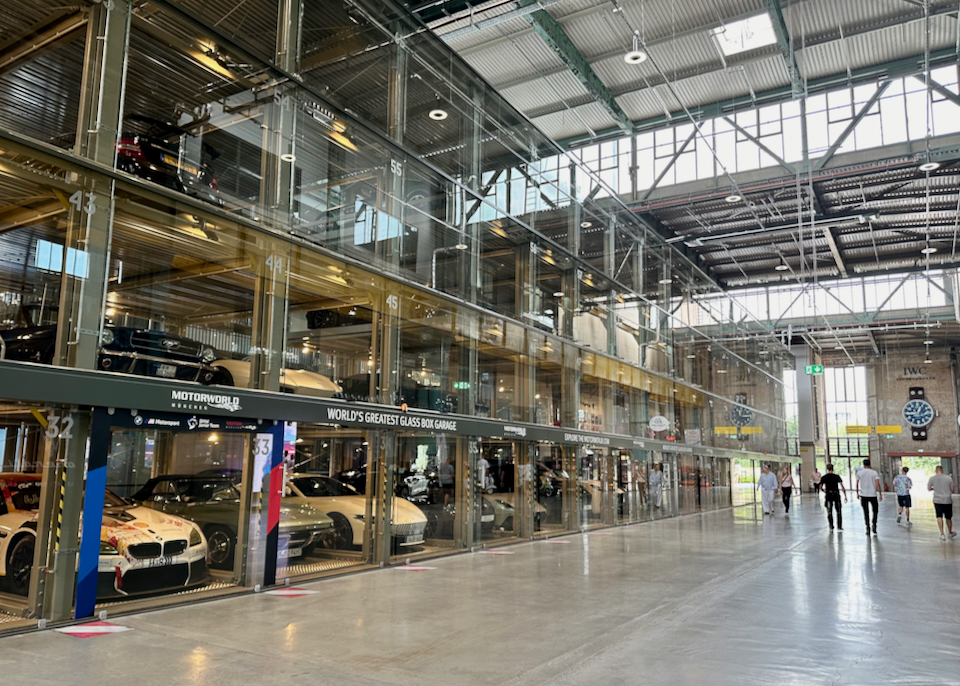
The AMERON München Motorworld hotel is a cool 4-star hotel located inside Motorworld auto museum. Some rooms and suites even feature in-room cars and motorcycles!
- Best Hotels in Schwabing & Englischer Garten
AMERON München Motorworld • Andaz Schwabinger Tor • Biederstein am Englischen Garten • Schwabinger Warheit • Gästehaus Englischer Garten- Best Cheap/Moderate Hotels
Motel One Parkstadt Schwabing • Steigenberger Hotel • Premier Inn Schwabing4. North of Altstadt: Olympiapark (Am Riesenfeld)
The northern district of Am Riesenfeld is principally known for Olympiapark (Olympic Park, above), built for the 1972 Munich Olympics, and the vast BMW headquarters nearby. In the park itself the main attractions are the soaring Olympiaturm TV tower, for sensational views over the whole city, the original Olympia stadion itself (tours available; visit this website to check the latest on “Flying Fox” zipline rides across the Olympia stadion, or guided climbs across the stadium roof.), and the Sea Life aquarium. The Olympiaalm is the city’s highest beer garden, set on the slopes of the Olympiaberg (Olympic Mountain), built out of the debris from World War II bombing. The Olympiahalle serves as a major concert venue, while history buffs should check out the multimedia “Einschnitt’ memorial pavilion commemorating the 12 victims of the 1972 Munich Massacre.
BMW Museum
Just across the Mittlerer Ring highway from the Olympiapark is the futuristic BMW Museum, part of a vast complex that includes BMW Welt, a vast sales showroom. The museum is an excellent introduction to all things BMW, with interactive exhibits, driving simulators, plenty of historic cars and motorcycles, and tours of the nearby factory.
Unless you are a major BMW fan, there’s not much point in staying up here – it’s easily accessible from the Old Town via the U-Bahn subway (U3 and U8).
- Best Hotel in Olympiapark (Am Riesenfeld)
H2 Olympiapark- Best Cheap/Moderate Hotels
Arthotel ANA im Olympiapark • B&B Hotel Olympiapark • Holiday Inn Express Olympiapark • Motel One Olympia Gate • Leonardo Royal Hotel5. South of Altstadt: Glockenbachviertel/Gärtnerplatz and Schlachthofviertel
Glockenbach (sometimes called Glockenbachviertel or by the wider borough name of Ludwigsvorstadt-Isarvorstadt) is the trendiest area of Munich, packed with hip bars, stores, and restaurants. The lively Gärtnerplatz (above) is the heart of the district (dominated by the grand Staatstheater am Gärtnerplatztheater), but don’t miss the pleasant promenade along the Isar and the Deutsches Museum, Munich’s sprawling museum of science and technology, which stands on narrow “Museum Island,” mid-river. Another lovely place to wander in this neighborhood is the old cemetery, the Alter Südfriedhof.
The Isartor (Isar Gate), built in 1337 as part of the city’s medieval fortifications, is one of the original city gates that is still standing. Its central tower features historic frescoes depicting Emperor Louis IV’s victory at Mühldorf.
The Glockenbach and Gärtnerplatzviertel neighborhoods form the nucleus of Munich’s LGBTQ community. Freddie Mercury lived (and partied) here in the early 1980s. Grabbing drinks and snacks at the all-night Kiosk Reichenbachbrücke overlooking the river is a Glockenbach tradition.
Wirtshaus im Schlachthof (in Schlachthofviertel) hosts a diverse array of cultural events that feature both local and international artists.
To the south of the cemetery lies Schlachthofviertel, the old slaughterhouse district, which like Glockenbach has developed its own underground cultural scene in recent years. As well as hip bars and restaurants, there’s the longest legal graffiti wall in Munich, the Bahnwärter Thiel music venue, and the new Volkstheater.
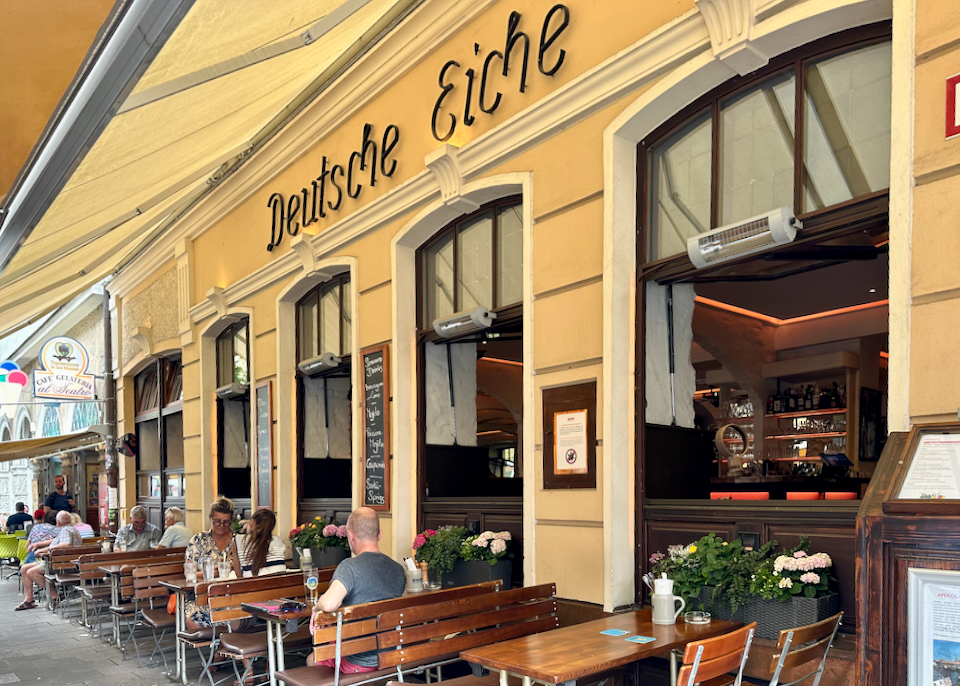
The wonderful Hotel Deutsche Eiche is located just off Gärtnerplatz, with fantastic access to the area’s restaurants, bars, and shopping.
- Best Hotels in Glockenbachviertel/Schlachthofviertel
Hotel am Viktualienmarkt • Hotel Deutsche Eiche • Hotel Olympic- Best Cheap/Moderate Hotels
Bold Hotel München Zentrum • Hotel Brack • Living Hotel Prinzessin Elisabeth • Lizz Hotel6. East of Altstadt: Lehel
The posh, primarily residential neighborhood between the Isar and the northern half of the Altstadt is known as Lehel. It’s one of the most beautiful districts in Munich, home to government offices, grand Wilhelminian and Art Nouveau buildings, and luxurious hotels. Along Maximilianstrasse there’s the Museum Five Continents, the city’s family-friendly ethnographic museum, while the curious Alpines Museum sits on Prater Island in the river, charting the history of mountaineering.
Alpines Museum
Further north, the equally grand Prinzregentenstrasse boulevard passes the Haus der Kunst (modern art gallery and home of the exclusive P1 night club) and the unbelievable sight of the Eisbachwelle surfers riding their artificial wave in the fast-flowing river at the southern end of the Englischen Garten.
Surfing in Munich? The Eisbachwelle is a renowned standing wave on the Eisbach River that has attracted experienced surfers since the 1970s. (The unlikely activity was officially legalized in 2010.)
Next up is the Bayerisches Nationalmuseum (Bavarian National Museum), one of the city’s major museums and must-see for anyone interested in the history and art of Bavaria. Beyond here is Sammlung Schack (Schack Collection), containing a collection of rare 19th-century German paintings once belonging to Count von Schack.
- Best Hotels in Lehel
Hotel Opera • Boutique Hotel Splendid-Dollmann • Unsöld’s Factory Hotel- Best Cheap/Moderate Hotel
Hotel ADRIA7. East of Altstadt: Au-Haidhausen
Venture across the Isar from Lehel and the Altstadt and you’ll be rewarded with delights such as cool ethnic restaurants, a mini Viktualienmarkt at Wiener Platz, cutesy cottages and cobbled streets to explore, and some of the best music in the city (classical at the Gasteig, home of the Munich Philharmonic, jazz at Unterfahrt, contemporary at Blitz Club). Don’t miss the Jugendstil beauty of the Müller’sches Volksbad (a gorgeous public swimming pool completed in 1901), the majestic Maximilineum (home ofthe Bavarian State Parliament), and the Hofbräukeller’s massive beer garden on a sunny evening (pure heaven), the former Höfbraubier brewery.
Bordeauxplatz
You can get a sense of what it was like for laborers to live here in the 19th century at the Üblacker-Häusltenement museum, while the laid-back Franzosenviertel (French Quarter) is centered on tranquil Bordeauxplatz. Fans of the “Rocky Horror Picture Show” can see showings (in English) at the Museums-Lichtspiele, Munich’s second-oldest cinema (built in 1910).
Two major Munich festivals take place here every year: Auer Dult (an antique and craft fair and folk festival, three times a year) on Mariahilfplat, and the Starkbierfest (“strong beer festival”) at Paulaner am Nockherberg (usually held in March).
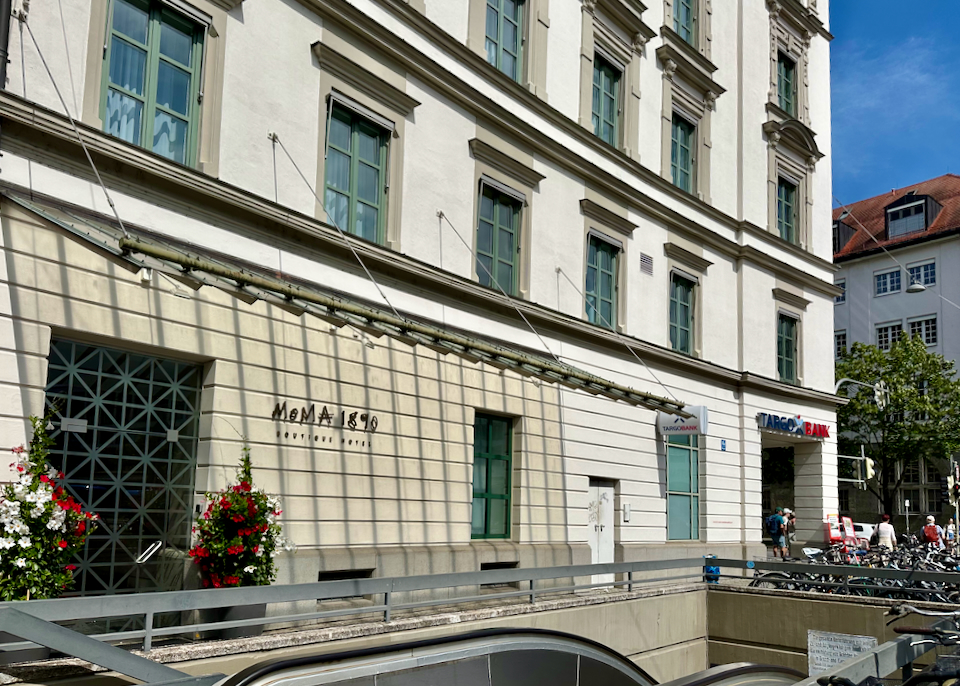
The wonderful MOMA1890 Boutique Hotel in Au-Haidhausen has a perfect location for accessibility to greater Munich – it’s located right at the München Ost train station and on the tram line.
- Best Hotels in Au-Haidhausen
Hotel München Palace • JAMS Music Hotel • Marias Platzl • MOMA1890 • Moxy Ostbahnhof- Best Cheap/Moderate Hotels
Gambino Hotel Werksviertel • Holiday Inn Leuchtenbergring • Motel One Haidhausen • Motel One Deutsches Museum • Residence Inn Munich City East8. West of Altstadt: Bahnhofsviertel
The tiny neighborhood of narrow streets south of Munich’s Hauptbahnhof (main train station) may not be the most appealing in the city, but it’s where you’ll find the most hotels, many of them much cheaper than anywhere else in the city. In addition to cost, the main advantage is accessibility to the station (you’ll be able to walk to your hotel with luggage), and city transport. It’s also not far to walk to the western end of the Old Town at Karlsplatz.
There’s not much to see in Bahnhofsviertel in terms of sights, and it can appear to be somewhat sketchy and rundown compared to the rest of city. Fear not – it’s a multicultural, and especially Middle Eastern enclave that’s perfectly safe for tourists (there wouldn’t be so many hotels here if it was dangerous). Alongside a spread of excellent Turkish and Middle Eastern restaurants, you’ll find Indian, Thai, and Chinese diners, supermarkets and grocery stalls, jewelry shops, and cheap phone stores (there are also coffee shops, regular supermarkets, craft beer pubs, and Bavarian restaurants to cater to the tourists).
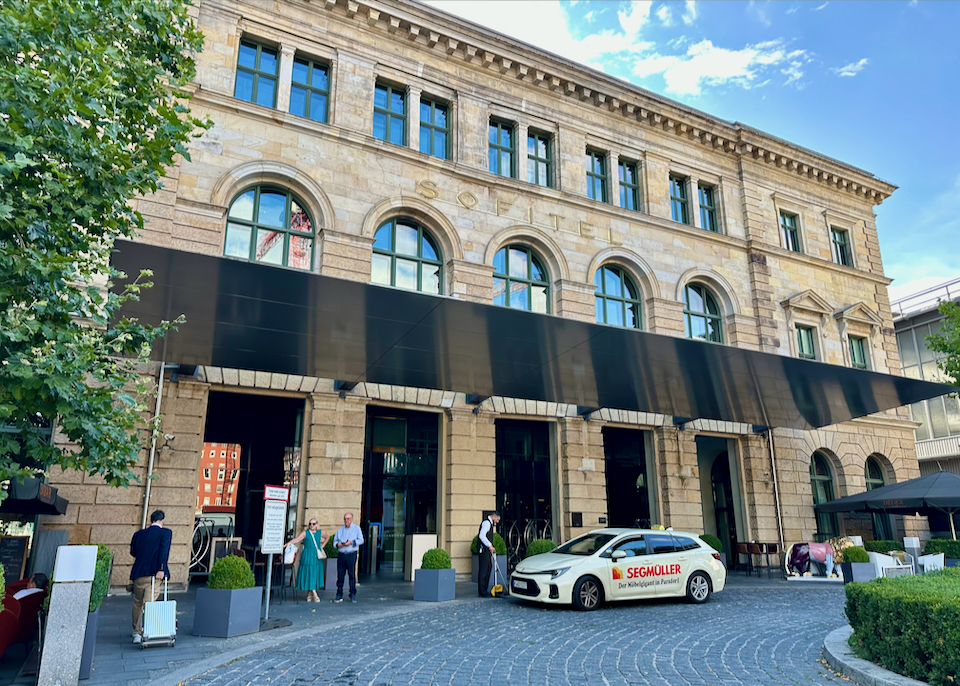
The Sofitel Bayerpost is the best luxury hotel near Munich’s Hauptbahnhof train station.
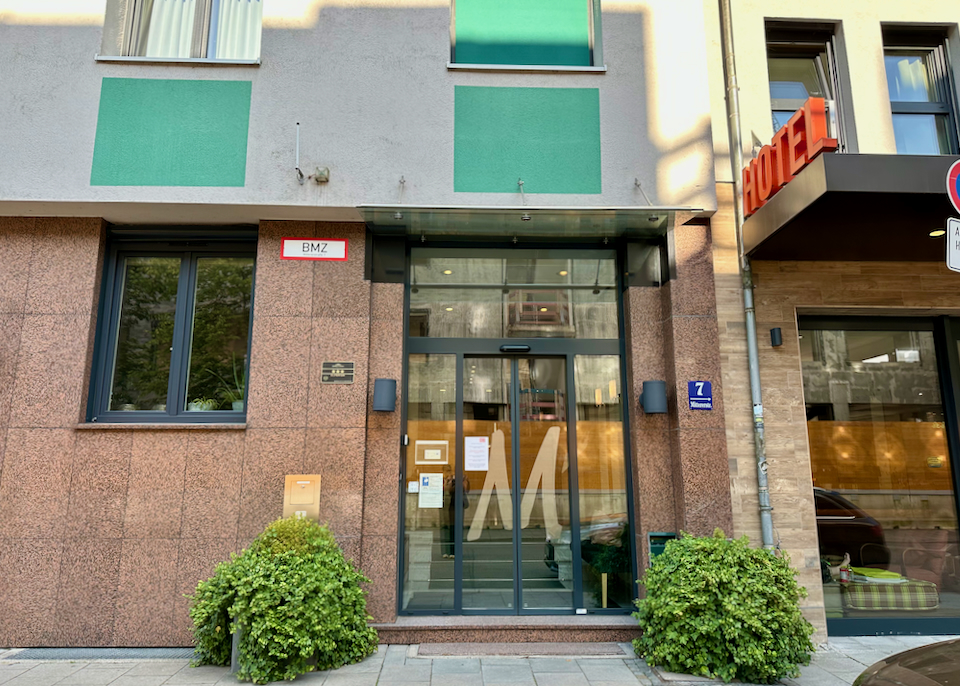
The Metropol is an excellent midrange option near the train.
- Best Hotels in Bahnhofsviertel
25hours The Royal Bavarian • Aloft Munich • Alpen Hotel München • Excelsior • Le Méridien • Schiller 5 • Sofitel Bayerpost- Best Cheap/Moderate Hotels
Cocoon Hauptbahnhof • Marc München • Hotel Metropol • Mercure City Center • Ruby Rosi Hotel9. Westend (Oktoberfest)
The area southwest of the main station is where most of the Oktoberfest action (mid-September until early October) takes place, on the vast Theresienwiese field in the Westend neighborhood (Theresienwiese is also the location of the annual Tollwood Winterfestival, held in late November and December, featuring an artsy Christmas Market. The “Weltsalon” tent features a program of international theater), but if that were your only impression of Munich, it would be a shame indeed. Abutting the Oktoberfest site is the majestic statue of Bavaria, which you can climb to get a wonderful panorama of the site. Behind Bavaria is the Ruhmeshalle (shown above), a tribute to Bavaria’s most famous citizens.
We found a friend at Bavariapark.
Just to the west is the sweet Bavariapark, which provides locals with a quiet place to relax, and the excellent Deutsches Museum outpost – the Verkehrszentrum – with its enormous hangar-like rooms filled with cars and other forms of transport through the ages, which are a must-see if you’re nearby.
One of our favorite Munich cafes is in Westend. Charming Marais is housed in the old Hans Mier haberdashery and retaining the 1920s wooden interior, shop counters, and shelves of tiny drawers.
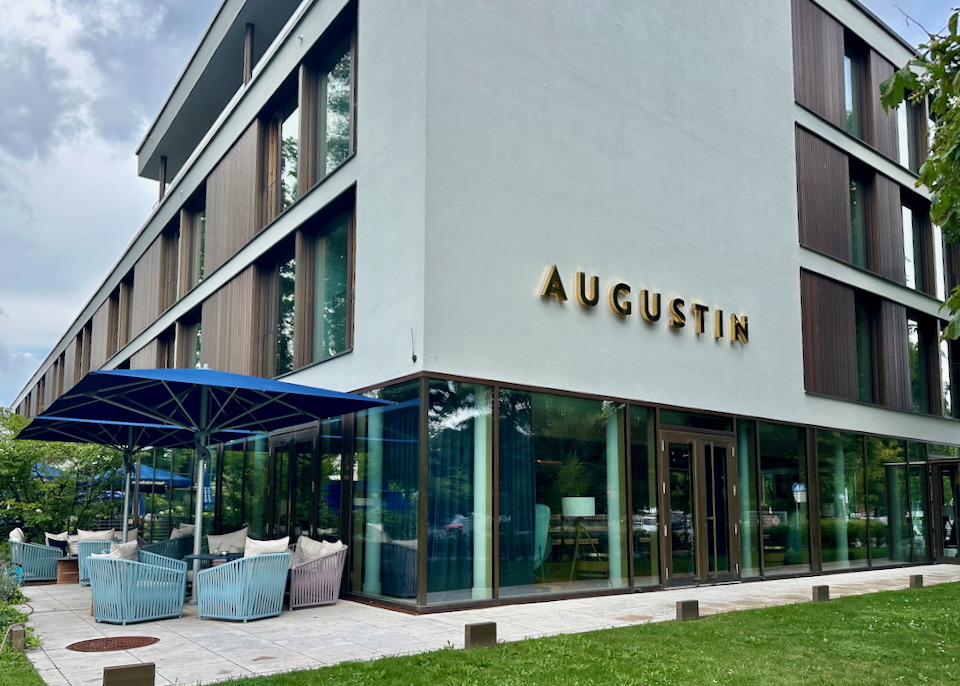
Augustin hotel is located right at Bavariapark and the Oktoberfest site at Theresienwiese – and an easy walk to metro.
- Best Hotels in the Westend
Augustin • Bavaria Boutique Hotel • Hilton Garden Inn Munich City West • Roomers Munich- Best Cheap/Moderate Hotels
Holiday Inn Express Munich City West • Motel One Westend • Hotel Seibel • Pension Belo Sono10. West of Altstadt: Neuhausen-Nymphenburg
The highlight of this far western district of Munich is Schloss Nymphenburg, a palace with beautifully preserved buildings and perfectly manicured gardens (including the Botanical Garden Munich-Nymphenburg). The palace dates to 1664 and makes for a lovely day trip. (Tram #17 from the main train station takes around 25 minutes.) Duke Franz of Bavaria, the current head of the House of Wittelsbach, still lives in part of it. The complex includes King Ludwig I’s sensational Schönheitengalerie (“Beauty Gallery”), the BIOTOPIA lab (a taste of what’s to come in the future Natural History Museum Bavaria), the Marstallmuseum (Museum of Carriage and Sleighs), the Nymphenburg Porcelain Museum, and the Amalienburg hunting lodge.
To the south of the palace lies the famous Hirschgarten, open since 1791 and the largest beer garden in Bavaria. If you walk along the Auffahrtsallee bordering the canal from the palace into Neuhausen itself you can visit Taxisgarten, a pleasant beer garden, slow food pioneer Café Ruffini, or sample the gelato at Eiscafé Venezia, a local institution on central Rotkreuzplatz. It’s also worth checking out the striking Herz-Jesu-Kirche, a giant glass cube completed in 2000 as an uber-modern Catholic Church.
• Nymphenburg is an easy day trip from Munich, but if you would like to stay here Hotel Laimer Hof is the best choice (within walking distance of the palace). Hotel Kriemhild am Hirschgarten is also excellent. A bit further west lies Schloss Blutenburg, another former hunting lodge of the Bavarian dukes. If you’re driving and want to stay nearby, Hotel Blutenburg is a cheap and solid option.
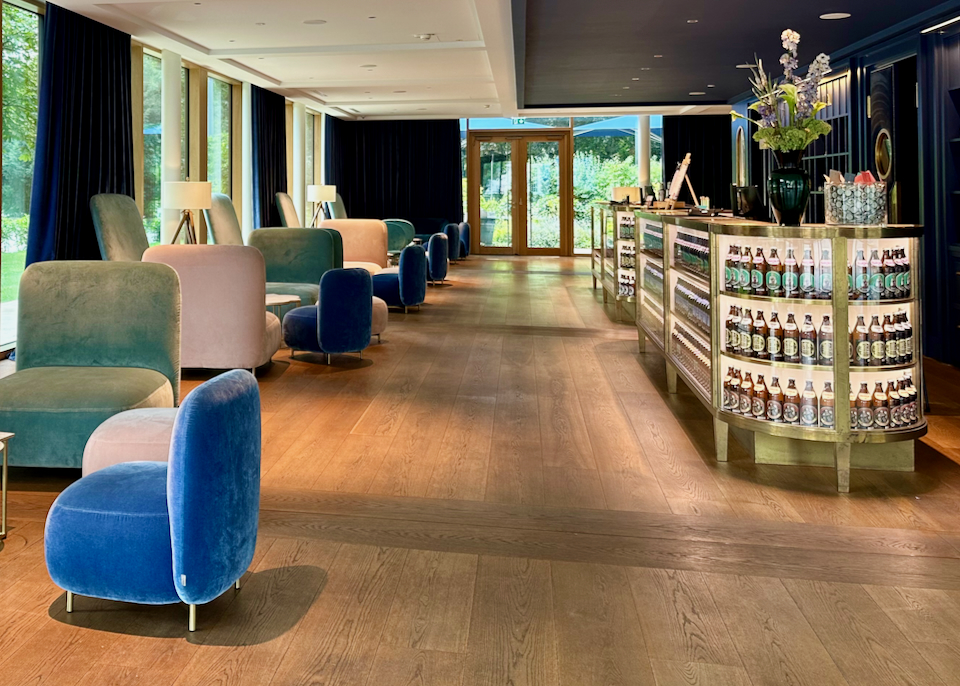
We particularly like Augustin hotel in Westend for families – located right on Bavariapark, they offer Family Rooms and rooms with 6 bunk beds.
Munich Travel Tips
- While it’s relatively easy to explore the Altstadt on foot, to reach the outer neighborhoods you’ll want to use the city’s excellent public transport system. Operated by Münchner Verkehrs-und Tarifverbund (MVV), this includes the Munich S-Bahn trains, Munich U-Bahn subway, trams, and city buses. It’s cheap and easy to use, with lots of online resources, maps at stations, and announcements in English. It’s not a good idea to rent (or use) a car while here – the roads can be congested (and complicated to navigate), and parking is expensive.
- Bike rental is available through bikeshare outfits like Call a Bike. Munich is a great place to ride bikes, with miles of bike lanes and trails.
- Munich Airport is about 20 miles (32km) northeast of the city. As one of the largest airports in Germany, it’s well connected to cities all over the world. The S1 and S8 S-Bahn trains whisk you from here into the city center (main train station) in around 40 minutes (every 10–20min). The train is usually faster than the Lufthansa Express Bus.
- If you really intend to visit a lot of Munich’s major attractions, consider the “München Card” or the “München City Pass”. Both have options that include free public transport and can cover 1 to 5 days, but the more expensive City Pass (from around €38) includes free entry to 45 top sights and tours. If you’re not sure that you’ll be able to pack in that much, the “München Card” is much cheaper (from €4.90) and still gives 70 percent discount on most attractions.
- Free wi-fi is available at Munich Airport and throughout the city itself; look for “M-WLAN Free Wi-Fi” or “M-WLAN Secure Wi-Fi”.
- You’ll find a lot more English speakers in cosmopolitan Munich than in small-town Germany, but not everyone working in shops and restaurants will understand you. Try to learn a few words and numbers in German before setting out.
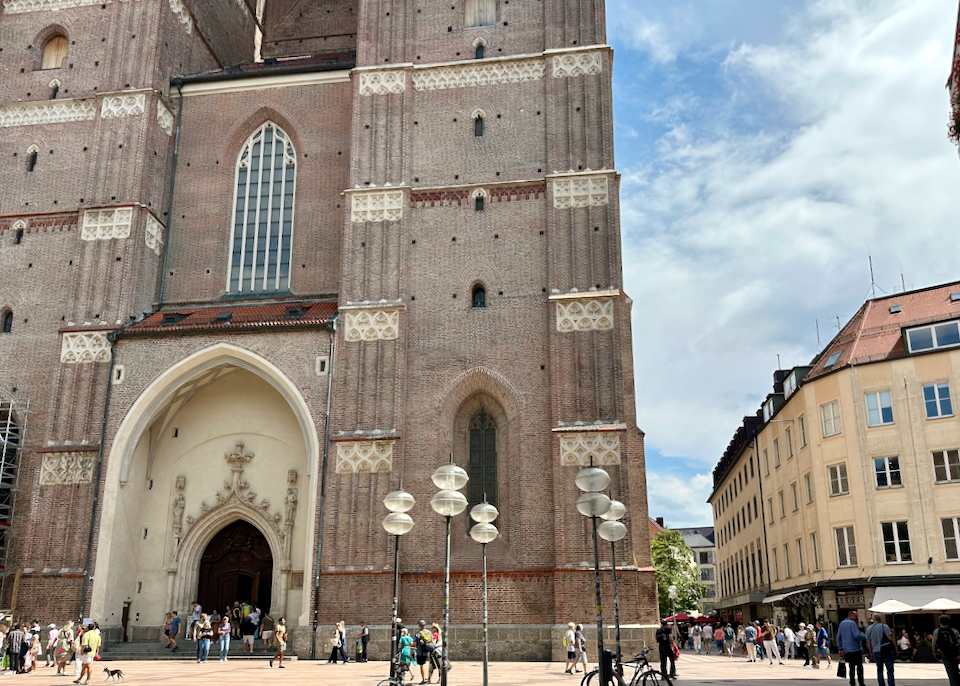
A sunny day on Frauenplatz in Altstadt, in front of Frauenkirche church.
Other Munich Neighborhoods
We’ve covered our favorite neighborhoods to visit and stay in more detail above, but with more time the following districts are also worth checking out. Additionally, you can reach major tourist destinations such as Lake Starnberg and the “Five Lakes Country” beyond the city using public transport. Another day trip, important for anyone wanting to understand Germany’s dark past, is the Nazi concentration camp at Dachau in the northwest of the city, which is easily reached via the S-Bahn (S2) plus a short bus ride (around 45 minutes total).
- Oberschleissheim – Schleissheim Palace Complex: Some 10 miles (15km) north of central Munich, suburban Oberschleissheim is best known for the Schleissheim Palace complex comprising three grand Baroque buildings that were summer residences of Bavarian rulers): Old Schleissheim Palace, New Schleissheim Palace, and Lustheim Palace. Tag on a visit to the Deutsches Museum Flugwerft (the aircraft section of the Deutsches Museum, with over 60 planes and helicopters on display), and it’s easily worth a full day of sightseeing. The S-Bahn (S1) zips between Munich main train station and Oberschleissheim in around 20 minutes, but there are two excellent hotels up here if you are on a road trip of the area: Blauer Karpfen and Chalét Zum Kurfürst.
- South Munich: The family-friendly attractions of southern Munich lie along the leafy banks of the Isar River and its adjacent canal (the Isarauen or “floodplains”), with a beautifully restored section lined with trails south of the Wittelsbacherbrücke known as the Flaucher. (The Flauchersteg footbridge is a popular spot for sunbathing and swimming in summer.) The Flaucher also contains Zum Flaucher Biergarten, a Munich beer garden institution. The main attraction is the extensive Hellabrunn Zoo, which also includes an aquarium. Further south, you can tour the studios at Bavaria Filmstadt, where German hit TV show Das Bootwas made, as well as where special effects forthe Neverending Story were produced. Our favorite hotel down here is Leonardo City South. Rioca Munich Posto 3 is excellent, but only worth it if you’re driving. There’s also a decent youth hostel, HI Munich Park.
- Bogenhausen and Messe München: Bogenhausen lies northeast of central Munich, on the other side of the Isar. It’s a relatively posh residential district today, with a handful of sights not far from the Luitpoldbrücke across the river from Lehel. The neighborhood’s main drag, Prinzregentenstrasse, begins with the iconic Freidensengel, a column topped with a golden “Angel of Peace”, and leads to Museum Villa Stuck, former home and studio of painter Franz von Stuck (a tutor of Paul Klee and Wassily Kandinsky). Further east is the Prinzregenten theater, home to the Bavarian Theater Academy and State Opera. North along Maria-Theresia-Strasse is the Monacensia Library, which houses a permanent exhibition on seminal German writer Thomas Mann, who once lived nearby. The best hotels in Bogenhausen include the luxury Parkhotel Rothof, Best Western Arabellapark, Hyperion, and the Westin Grand. Further east lies the exhibition complex of Messe München. If you are attending a trade fair, most of the budget hotels near Messe München itself are not great; your best options are H4, Motel One, and Novotel. (It’s otherwise 20 minutes on the subway from the Old Town.)
- There’s not much point in staying near Munich Airport (München-Flughafen) way out to the northeast of the city unless you have an early flight. If you do need to stay here, the best hotels are the expensive but convenient Hilton and cheaper Novotel on the airport premesis, plus the aptly-named Flightgate Munich Airport Hotel, Prize, and Premier Inn just outside the airport grounds.
Summary: My Favorite Hotels in Munich
My Favorite Munich Hotels
• 5-Star: Mandarin Oriental
• Midrange: Hotel Metropol
• For Families: Augustin
• For Couples: DO & CO
• Best Pool: Andaz Schwabinger Tor
• Near Airport: Hilton
• Train Station: Sofitel Bayerpost
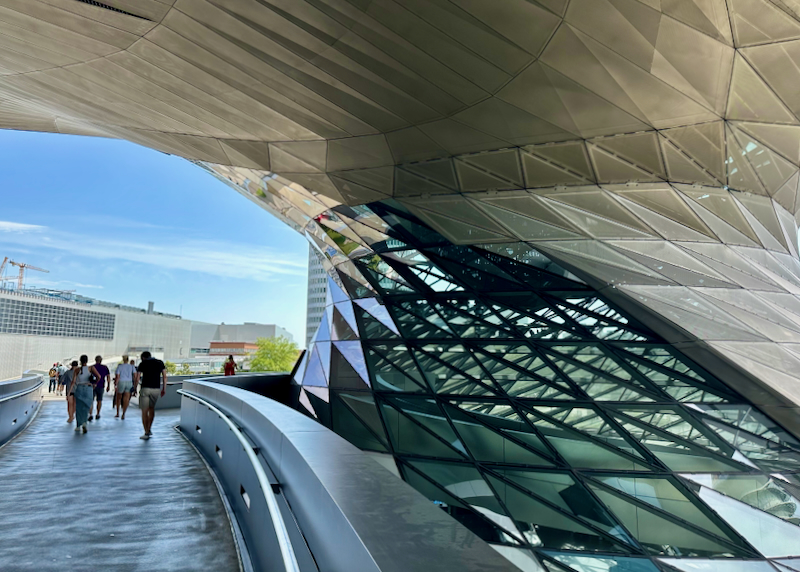
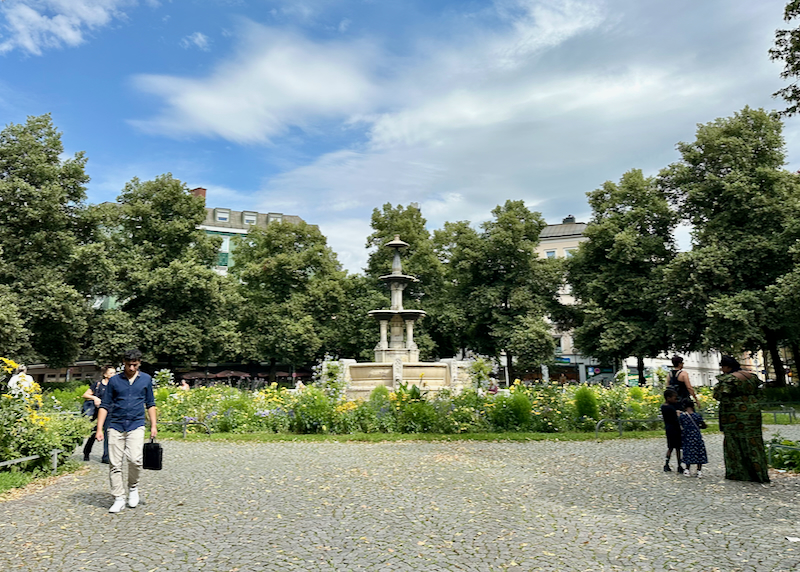
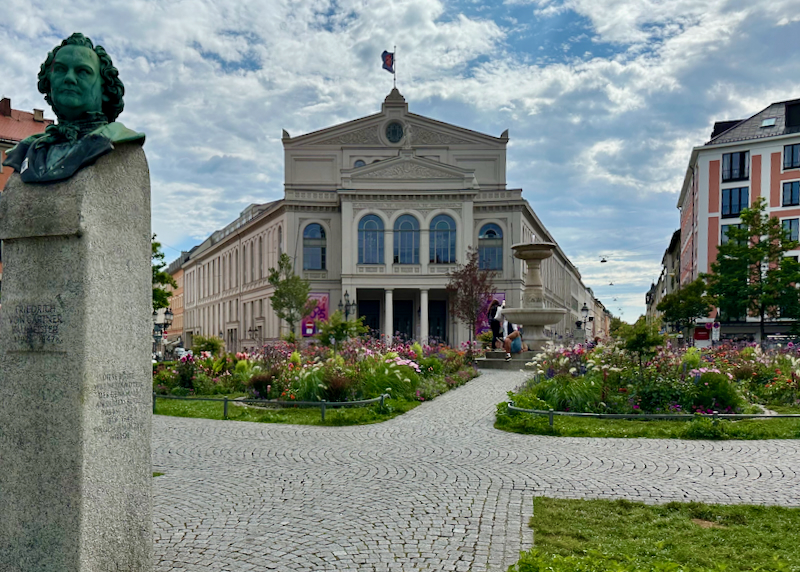
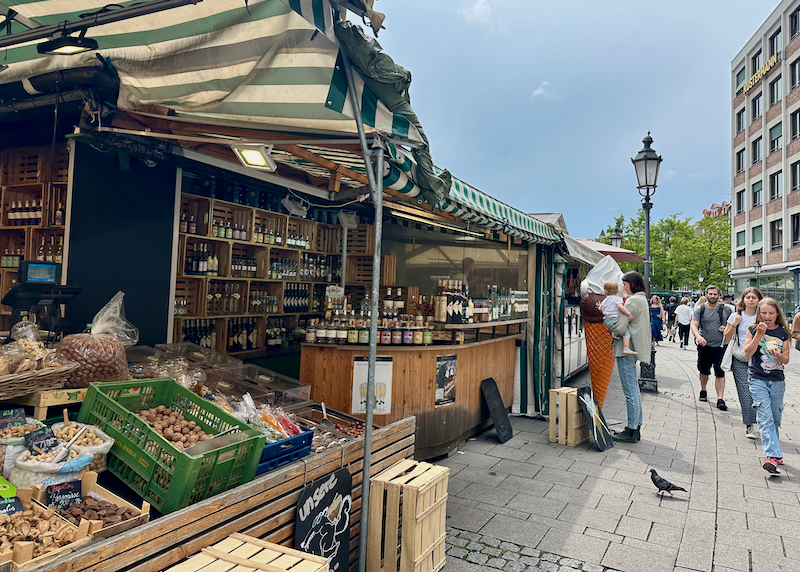
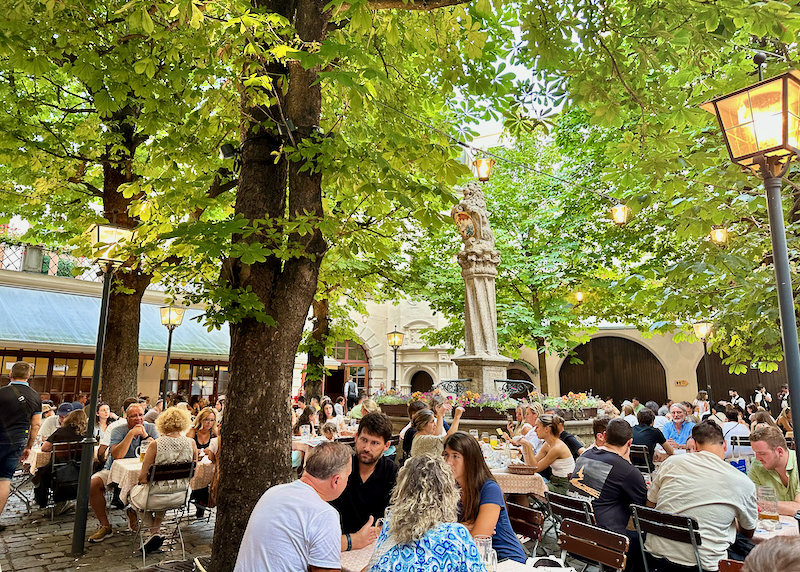
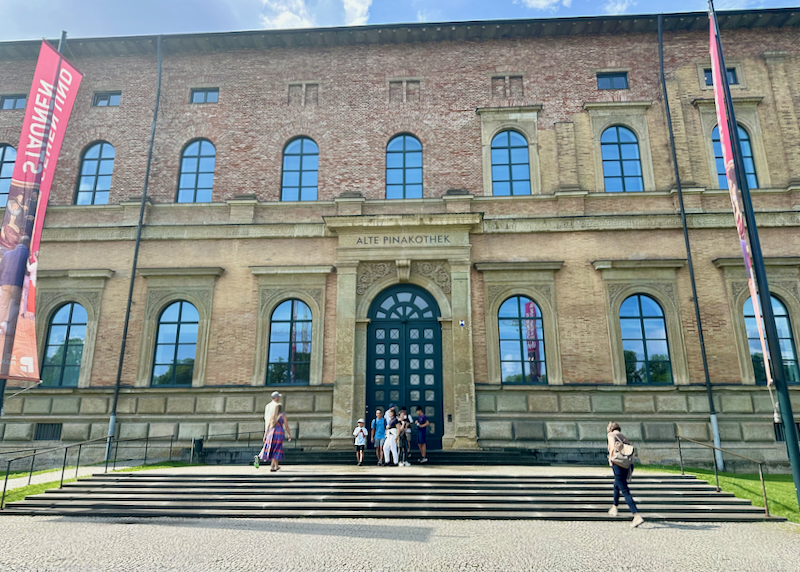
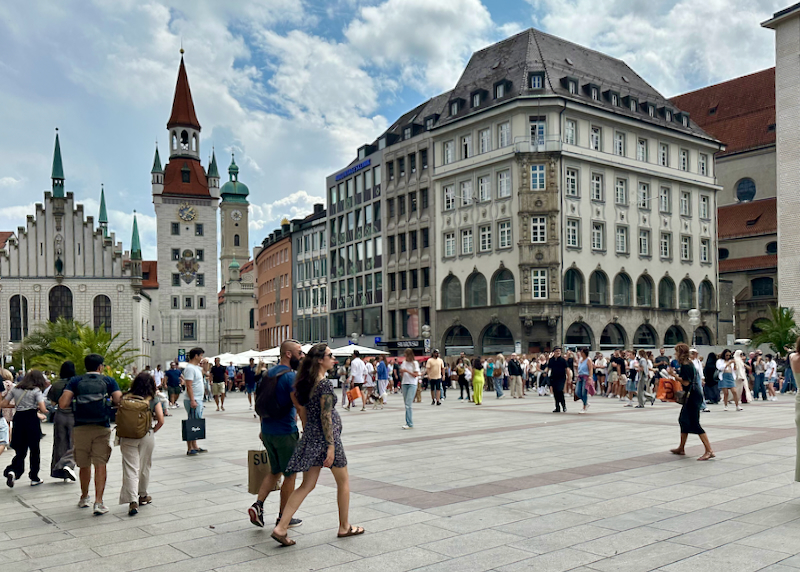
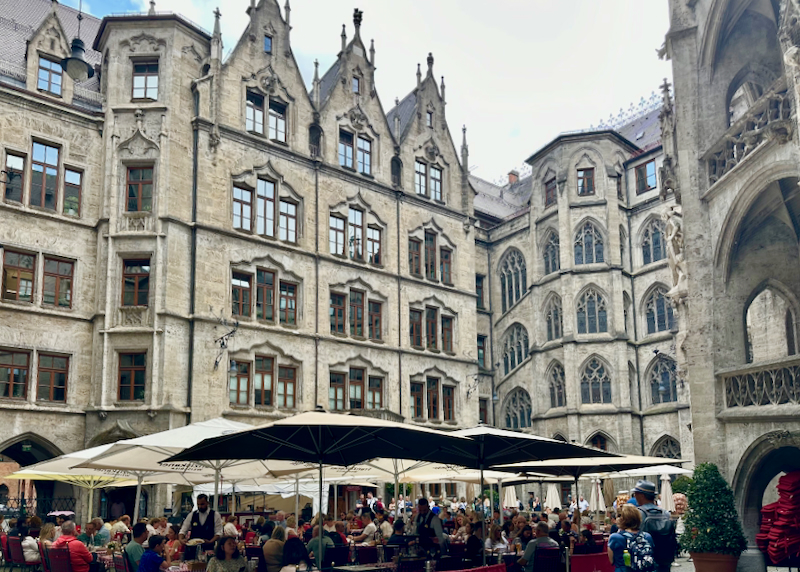
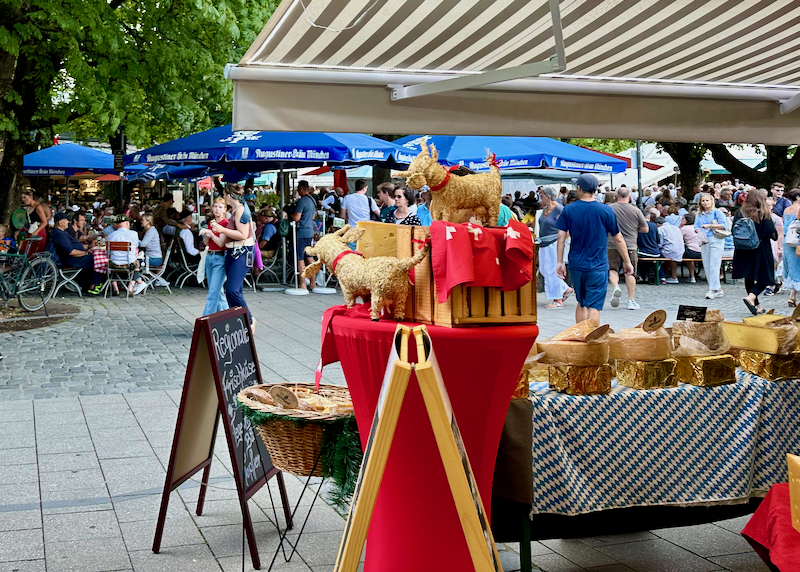
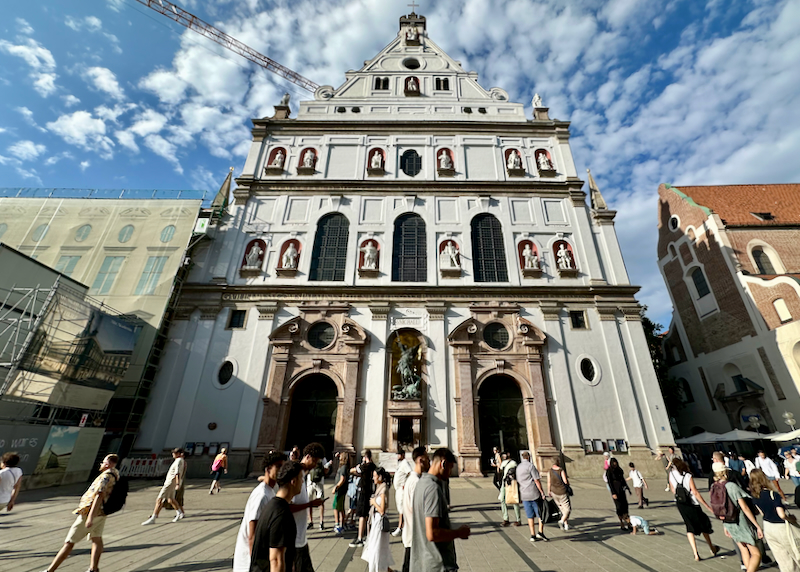
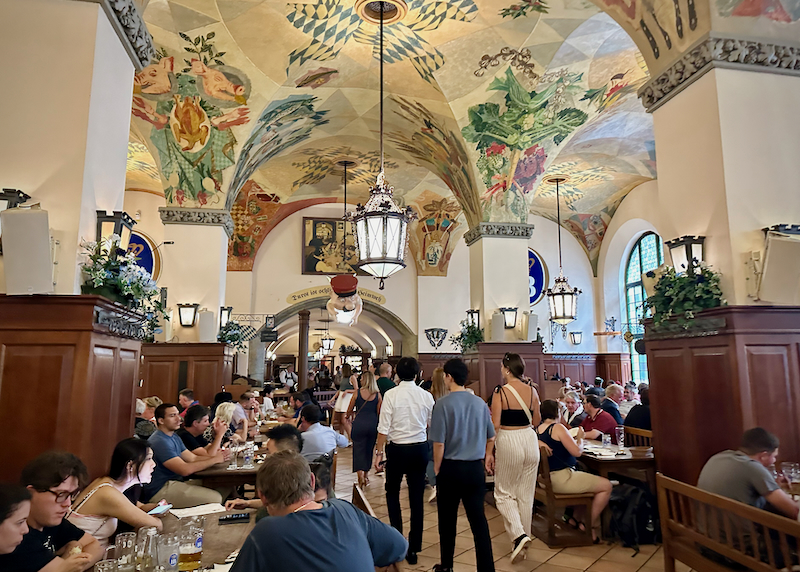
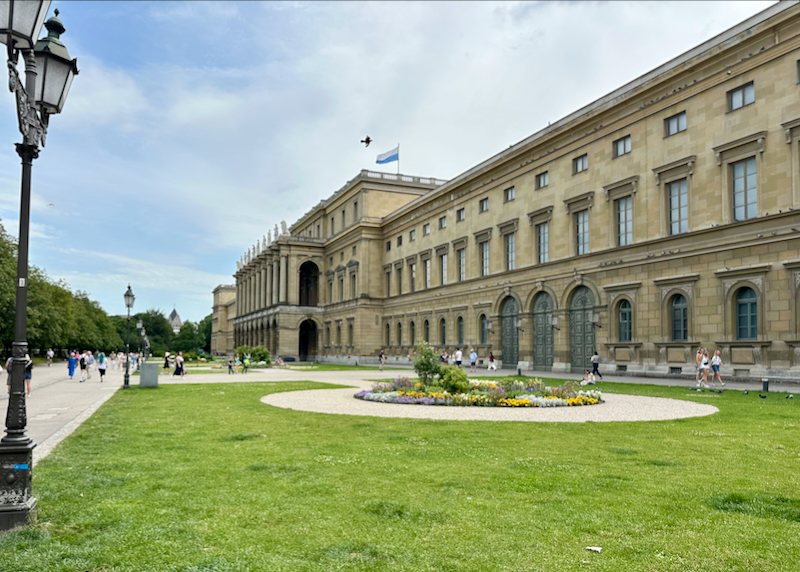
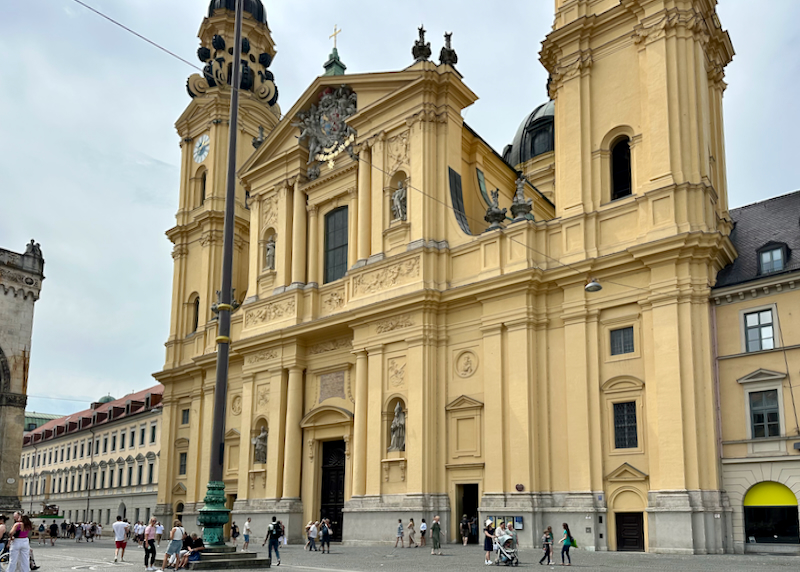
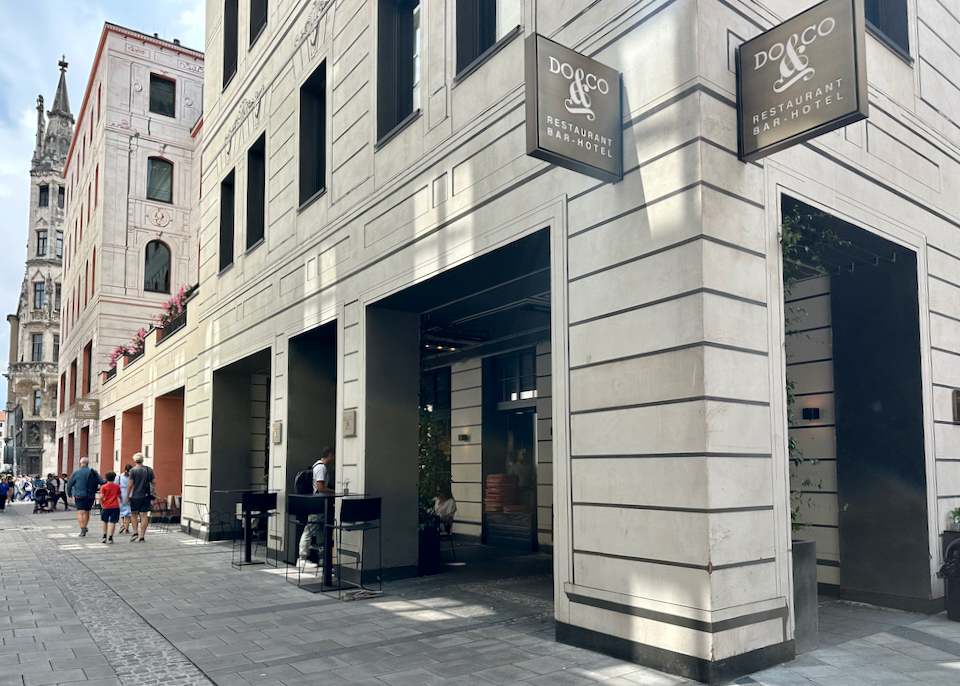
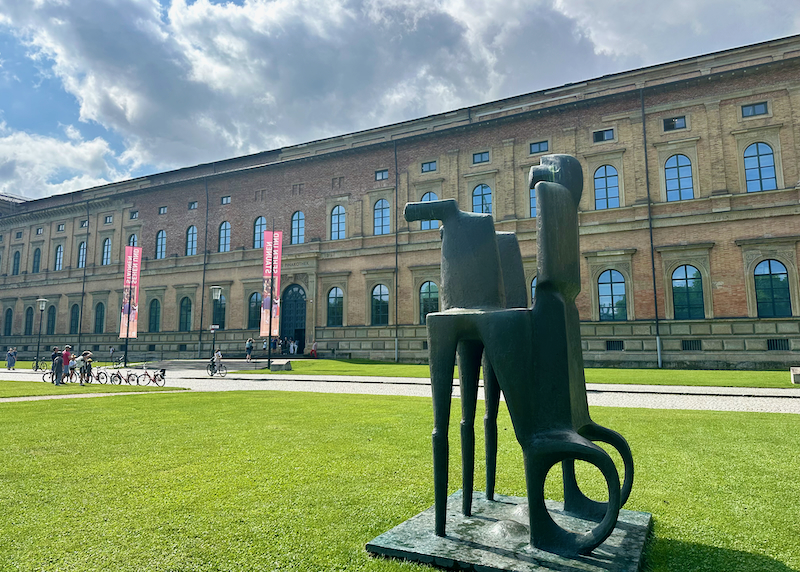
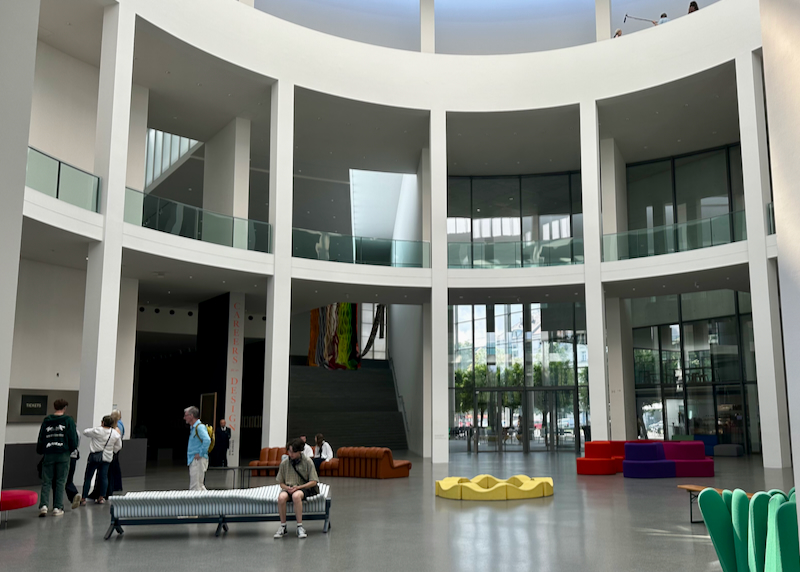
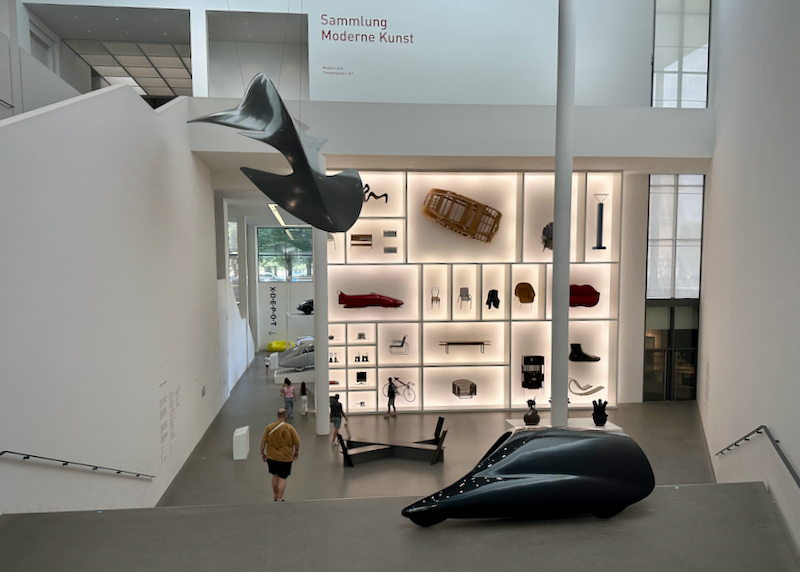
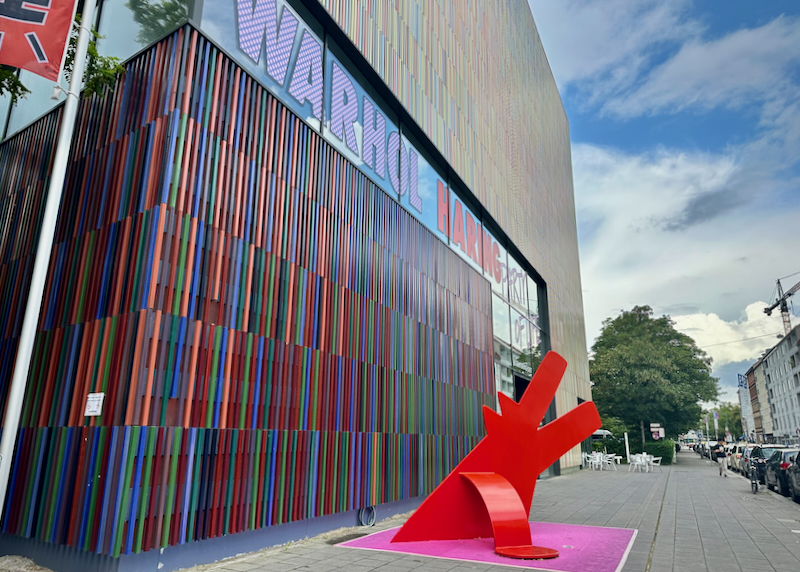
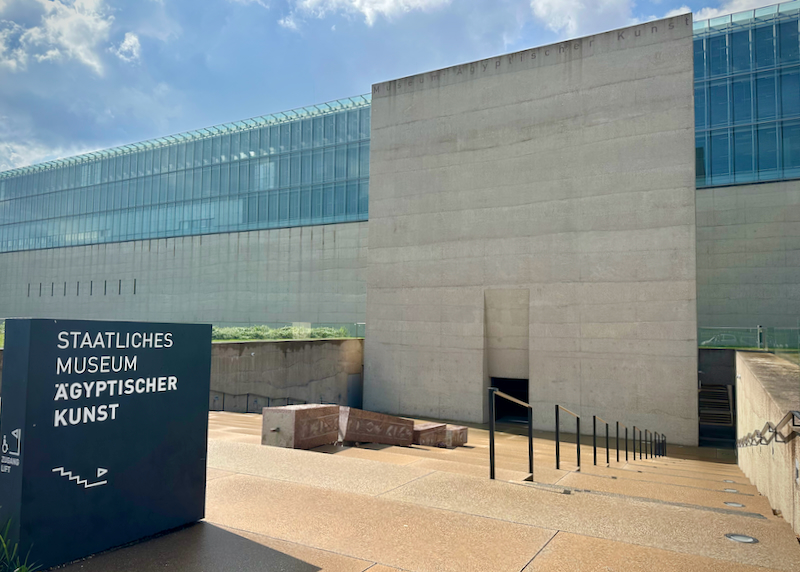
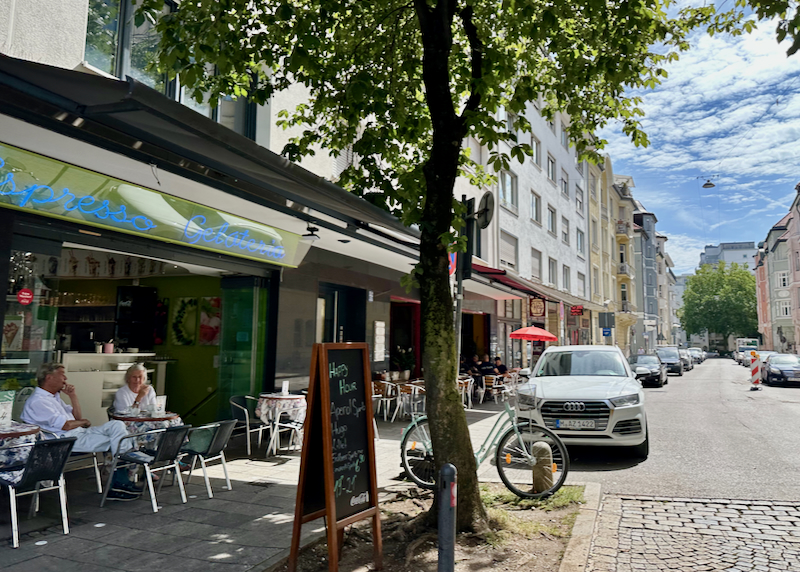
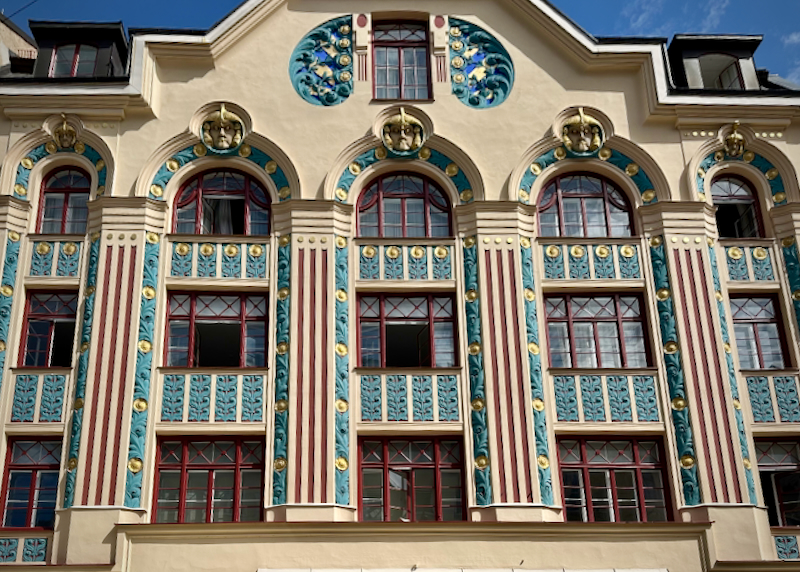
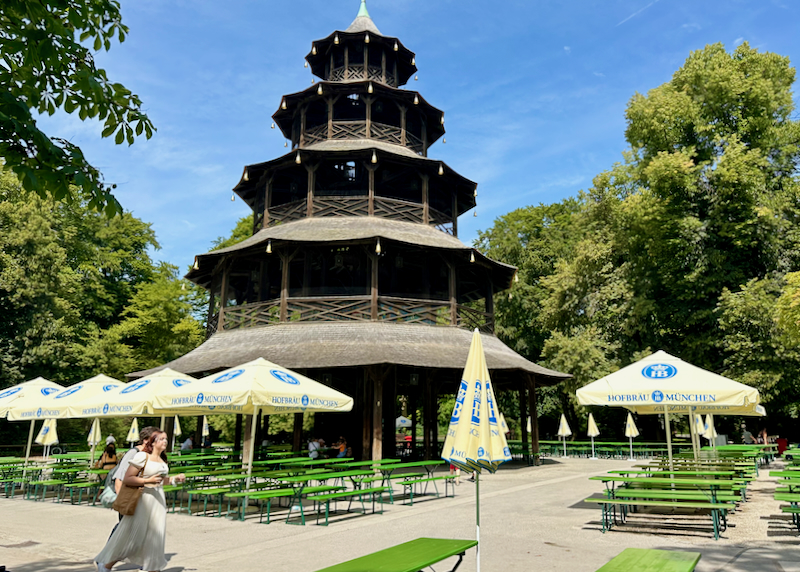
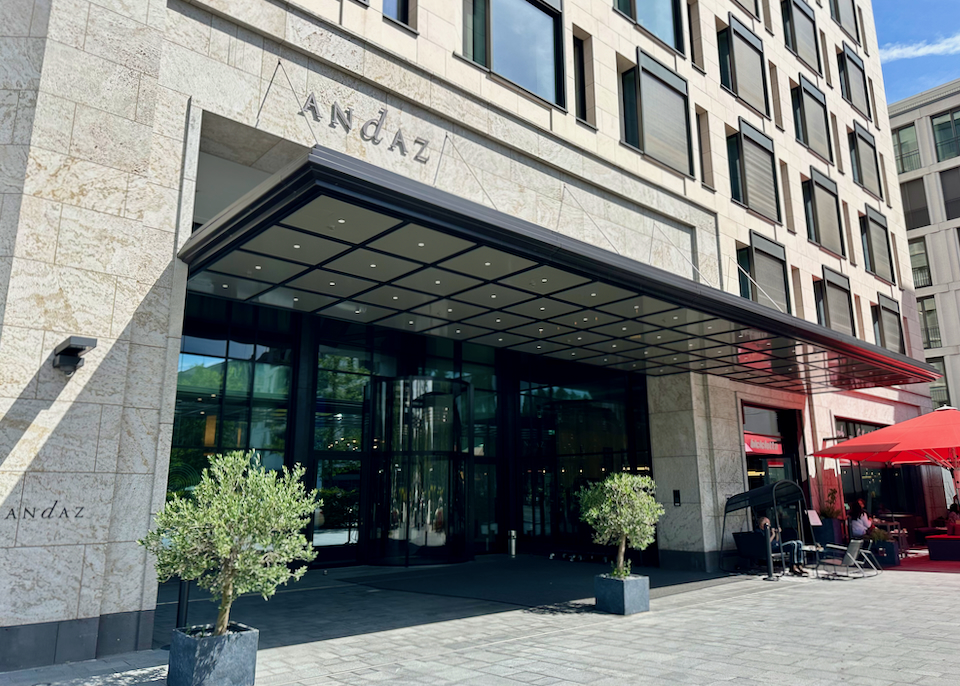
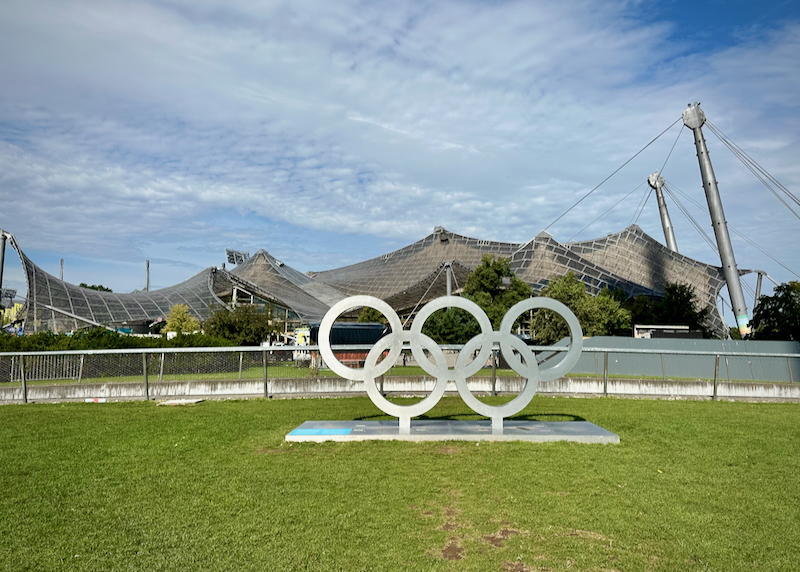
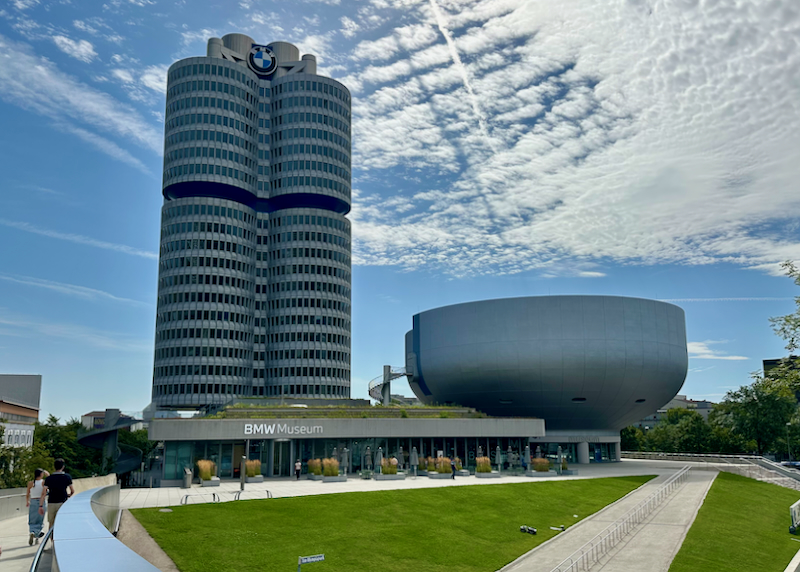
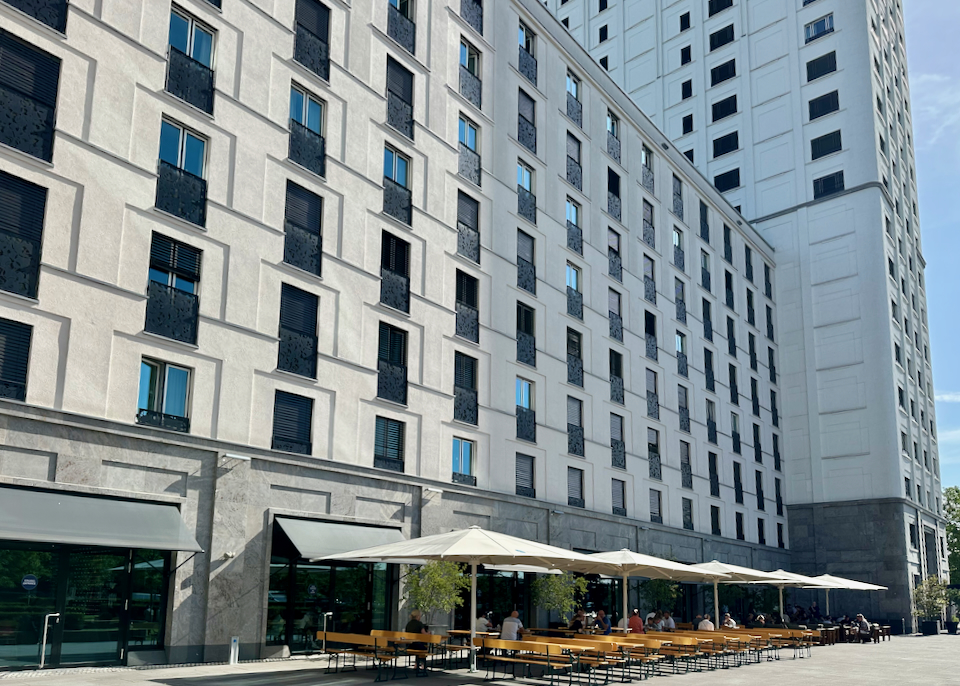
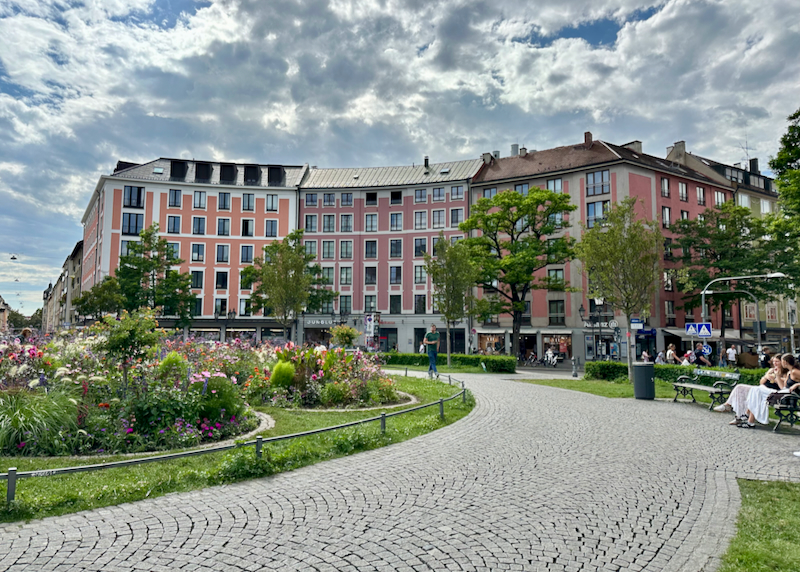
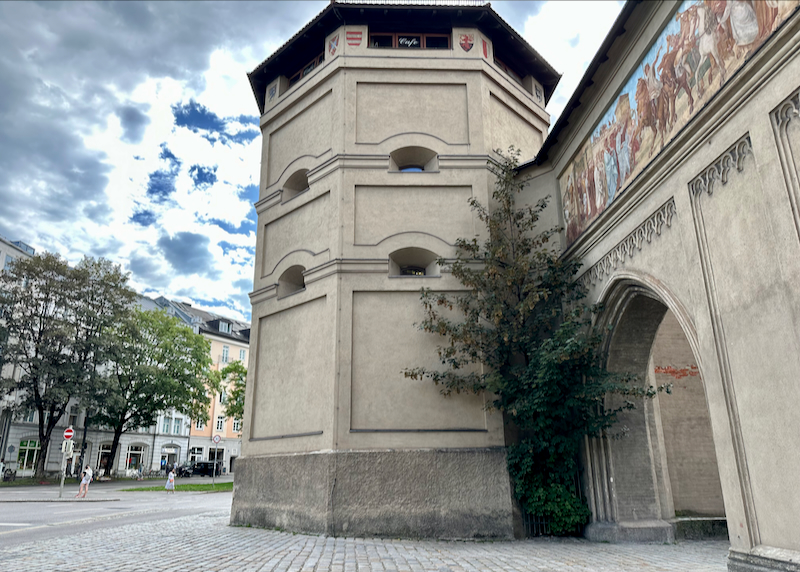
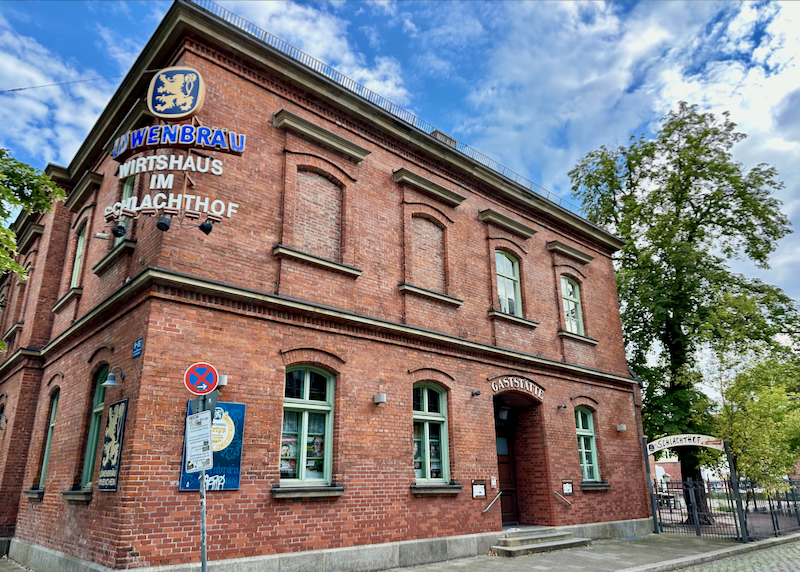
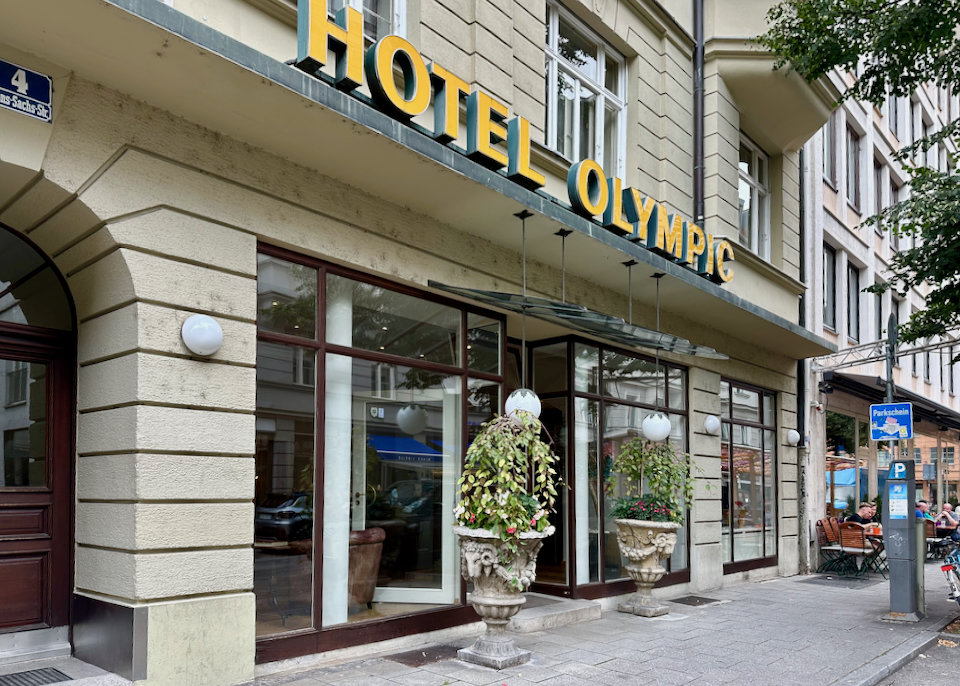
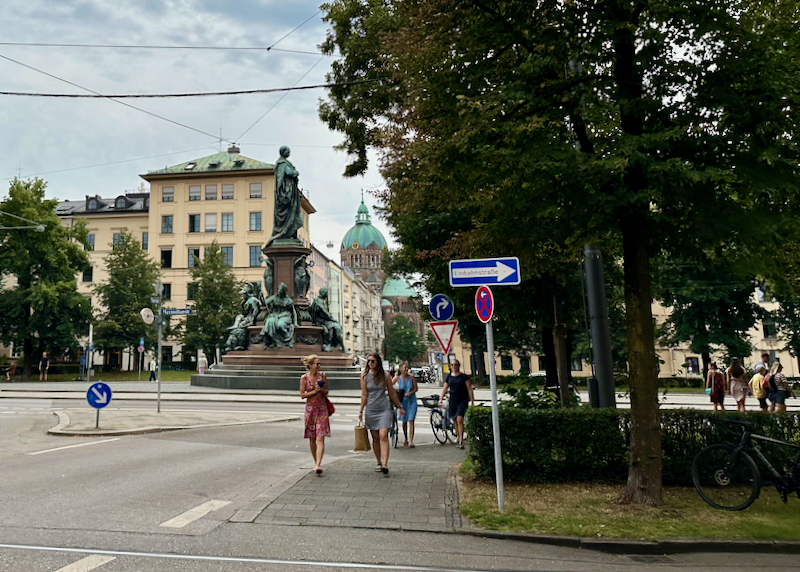
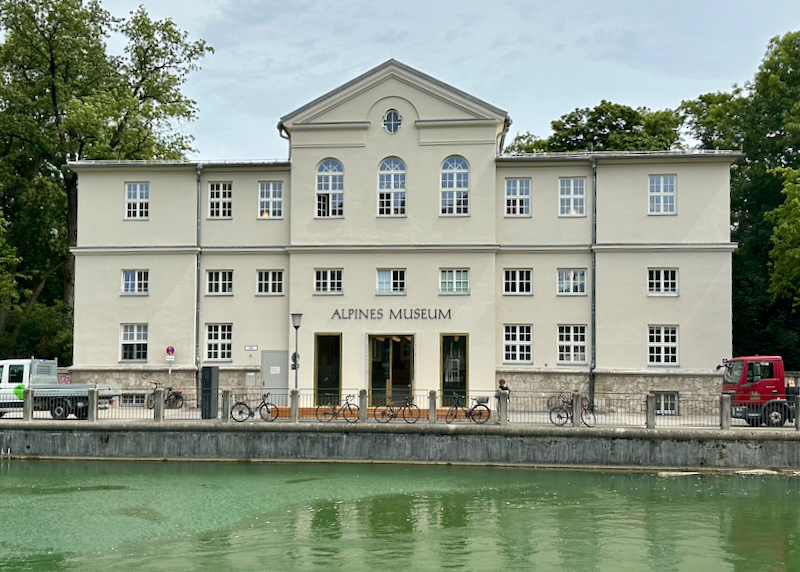
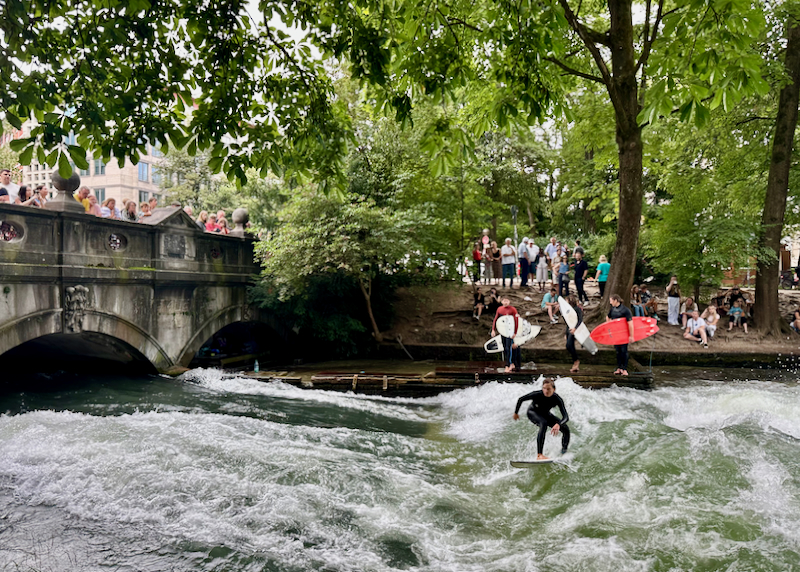
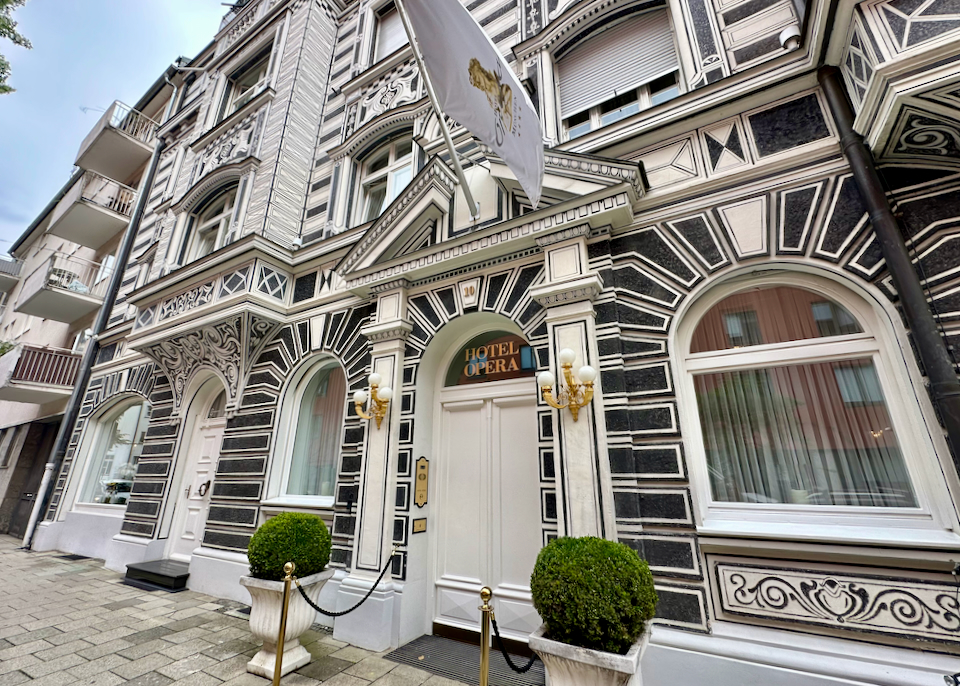
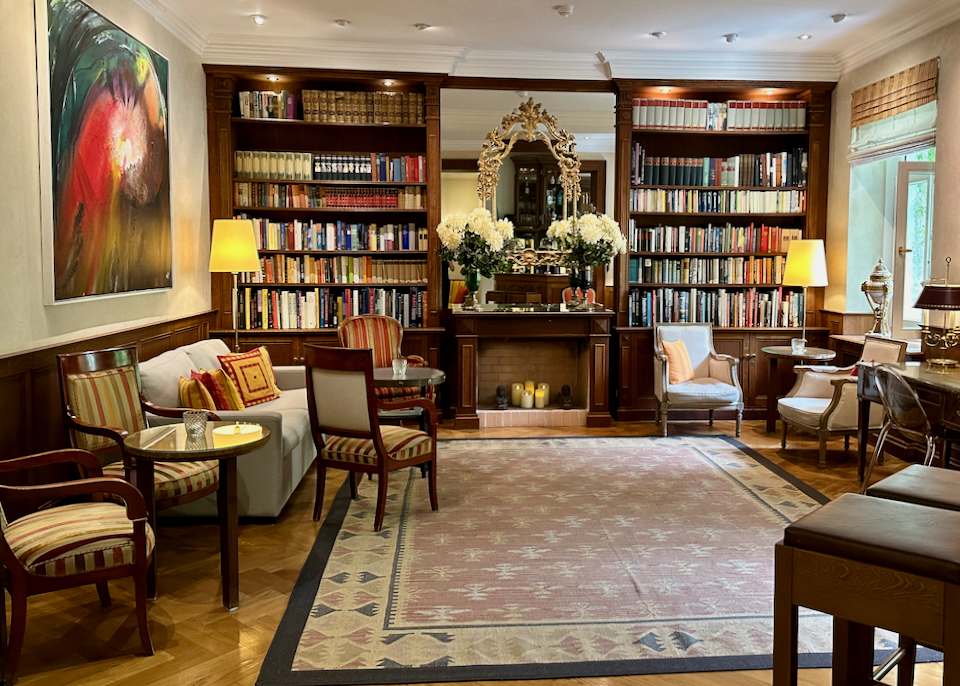
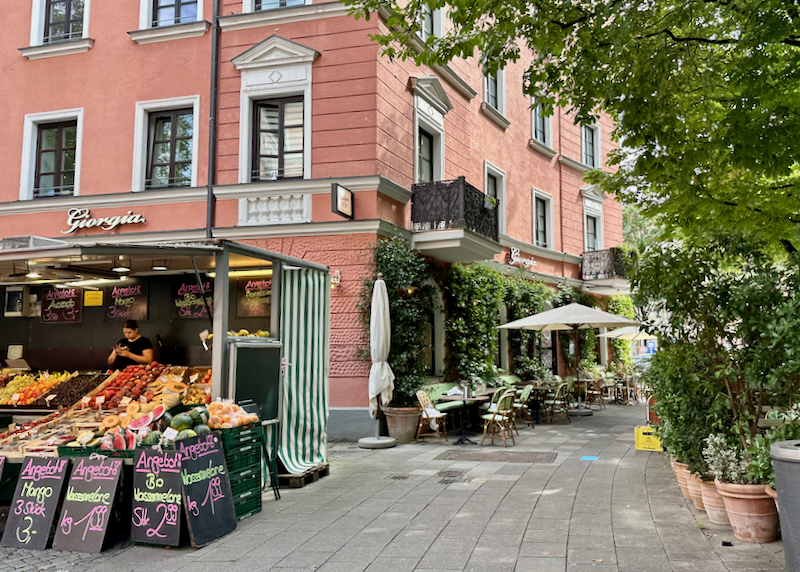
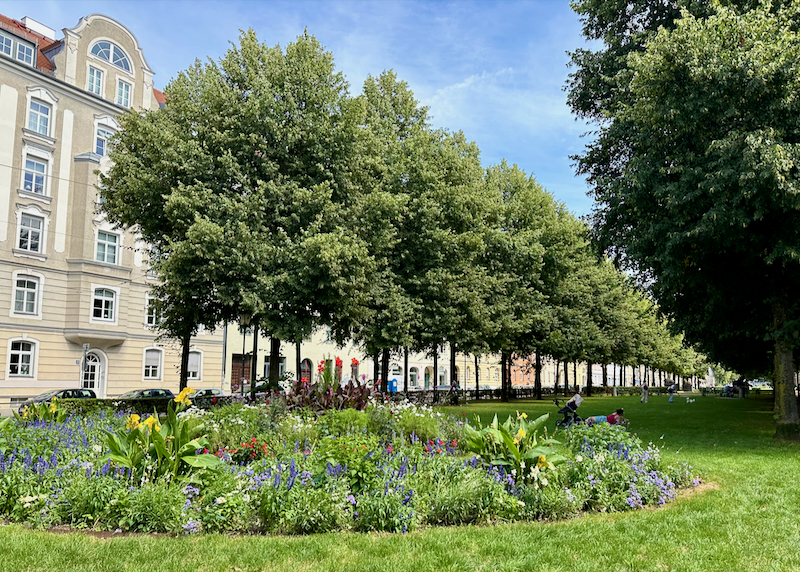
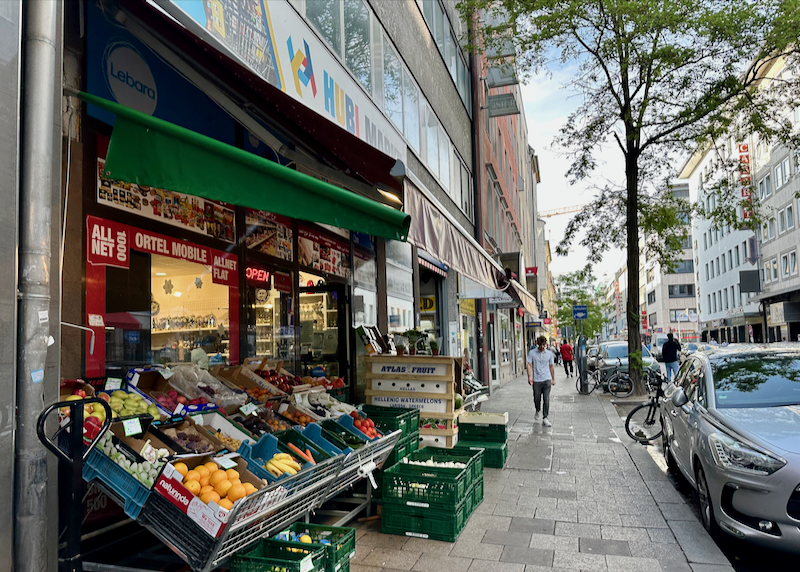
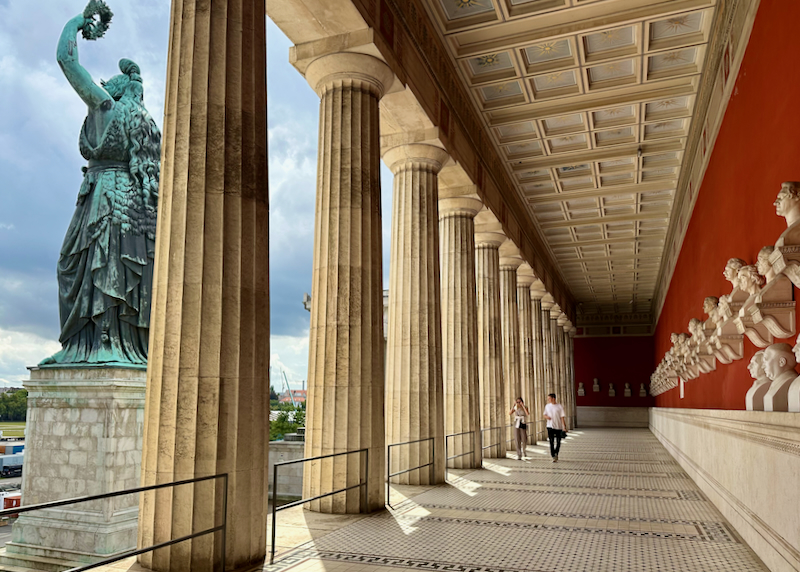
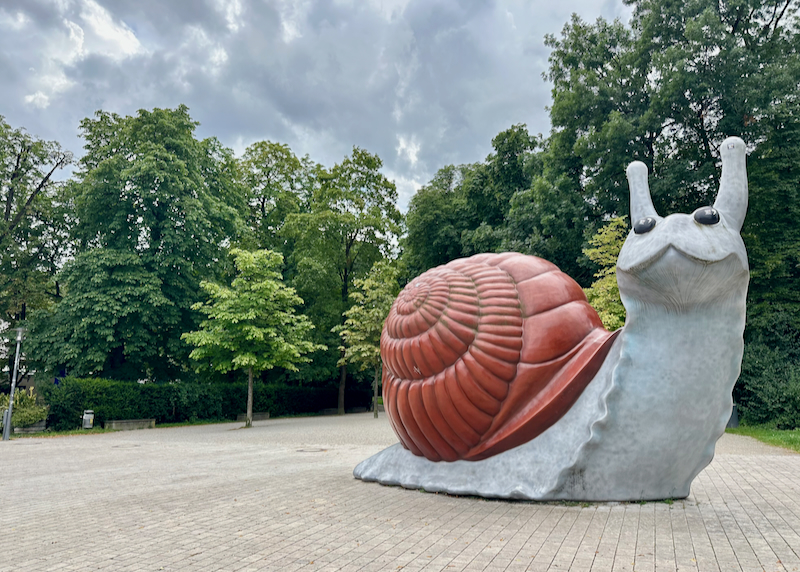
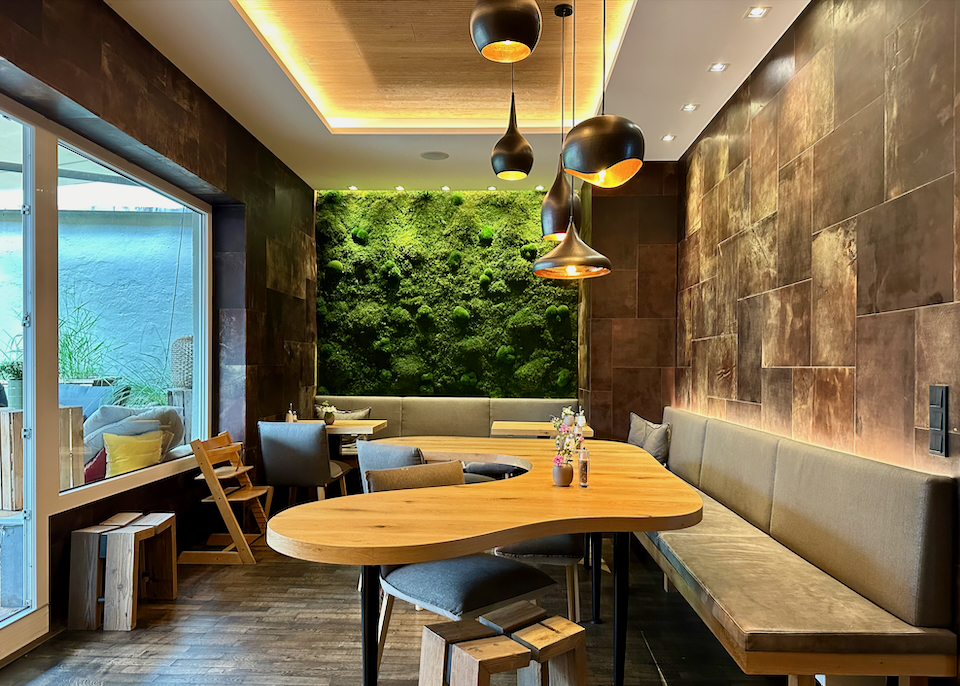
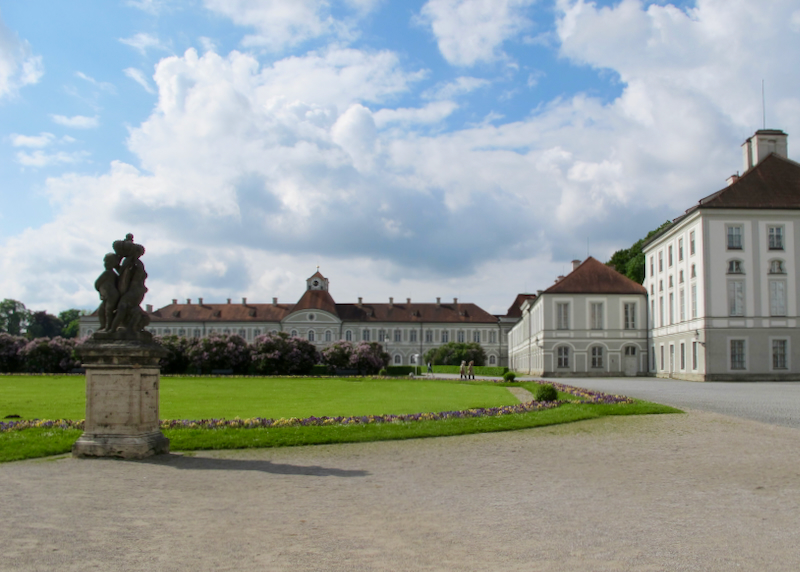
About Santorini Dave